Now that the 2022-23 NBA season is over, we're turning our attention to how each team should approach the offseason, including the draft and free agency. It started with the 10 teams that had been jockeying for lottery position and the best opportunity to select Victor Wembanyama, and continued with the four teams that were eliminated in the play-in tournament. Now with the NBA Finals complete, all 30 teams are in offseason mode.
We're breaking down the potential moves for each franchise, including a look at the state of each roster, finances, priorities for each front office, extension candidates to watch, team needs and future draft assets.
R -- restricted free agent; T -- team option; P -- player option
Jump to a team:
ATL | BOS | BKN | CHA | CHI | CLE
DAL | DEN | DET | GS | HOU | IND
LAC | LAL | MEM | MIA | MIL | MIN
NO | NY | OKC | ORL | PHI | PHX
POR | SAC | SA | TOR | UTAH | WSH

WON NBA TITLE
Denver Nuggets
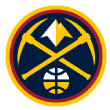
2022-23 record: 53-29
Draft picks in June: No. 37 (via WAS) and No. 40 (via DAL)
Free agents: Bruce Brown (P), Jeff Green, DeAndre Jordan, Thomas Bryant, Reggie Jackson, Ish Smith, Jack White (R) and Collin Gillespie (R)
State of the roster: Coming into the season, the question was whether Denver had a championship roster if healthy. In the 2020-21 and 2021-22 seasons, Denver players missed a total of 535 games, tied for the third most last season and sixth most in the prior year. The end result was a pair of early playoff exits, despite MVP seasons from Nikola Jokic. This season, Nuggets players missed 153 games due to injury, the eighth fewest in the league. In the playoffs, coach Michael Malone used one starting lineup for all 20 games. The result? The first championship in franchise history. The big picture outlook is that Denver's starting five is positioned to have sustainable success for at least the next two seasons. Jamal Murray, Kentavious Caldwell-Pope, Michael Porter Jr., Aaron Gordon and Jokic are all under contract through at least 2024-25 (Caldwell-Pope has a player option and can be a free agent in 2024). Jokic is entering the first year of the five-year, $272 million supermax extension he signed in July. Meanwhile Murray has two years left and is extension eligible this offseason, Gordon has three seasons remaining and Porter has four years left. If there is a concern, it comes with the new collective bargaining agreement and the impact it has on the Nuggets' ability to build depth around their core players. Denver is one of only two teams with three max players (Jokic, Murray and Porter). The Nuggets owe Charlotte, Orlando (2025) and Oklahoma City (2027 and 2029) first-round picks over the next seven years and enter the offseason with the possibility of losing sixth man Bruce Brown in free agency. The limited means with which to improve fall on the development of recent draft picks Christian Braun, Peyton Watson, Zeke Nnaji, and Vlatko Cancar. Denver will also have two second-round picks in this year's draft, and retains the rights to 2022 second-round pick Ismael Kamagate. The center averaged 9.6 points and 7.9 rebounds this season with Paris Basketball.
Offseason finances: The Nuggets are a tax team for a second consecutive year, a result of the starting five earning $150 million. Including Brown's $6.8 million player option, Denver is $7.7 million over the $162 million tax threshold. Brown has until June 21 to opt in to his contract for 2023-24. The Nuggets could have the $5 million tax midlevel exception if Brown or Jeff Green do not return, but signing a player pushes them closer to the $179.5 million second apron. They do, however, have a newly created second-round exception available to sign their draft picks to a contract longer than two seasons. Because Denver is likely over the $169.5 million first apron, the Nuggets cannot take back more than 110% in salary in a trade and are not allowed to sign a player bought out of their contract if his pre-waiver salary was more than $12.2 million. For example, Denver would not have been allowed to sign guard Reggie Jackson this season had these new CBA restrictions been in place.
Top front-office priority: After spending the prior four seasons in Detroit and Brooklyn, Brown has found a comfort level and an identified role in Denver. During the playoffs, Brown led all reserves in total points and Denver was a plus-9.8 per 100 possessions when he was on the court. Per Cleaning the Glass, Denver was plus-50.9 in the playoffs and averaged 146.3 points per 100 possessions when Brown played with Murray, Porter, Gordon and Jokic. However, Brown is projected to see his salary double if he declines his $6.8 million player option for next season. In his career, Brown has earned a total of $15.1 million. Because the Nuggets are a tax team and Brown has non-Bird rights, the maximum contract that Denver can offer the guard is $7.8 million. For Brown to receive a greater payday, he would need to sacrifice financially for one season and then become a free agent again in 2024. He would then be allowed to sign a contract starting at $13.4 million. The financial downside is that in 2024-25 Denver has $169 million in committed 2024-25 salary likely are a second apron team. The Nuggets are less restricted when it comes to Green. The next contract for the forward can range from the veteran minimum exception ($3.2 million), non-Bird rights exception (up to $6 million) or early Bird exception (up to $11.9 million). The early Bird exception has to be for a minimum of two seasons, not including any option years. Green averaged 7.8 points, 2.6 rebounds and shot 48.8% from the field in the regular season.
Extension candidate: Three years removed from signing a five-year, $158 million rookie max extension, Murray is now eligible to sign a new pact. Because he has two years remaining, the maximum that Denver can sign the guard to is three years and an additional $144 million in new money. The $44.3 million salary in the first year starts in 2025-26. Murray could take the risk and bypass signing an extension and wait until next offseason. If he earns All-NBA in 2023-24, he would then be eligible to sign a five-year, $300 million-plus supermax extension. In the conference finals, Murray had his second career playoff series averaging 30 points on 50/40/90 shooting (also 2020 first round vs. the Jazz). Murray and Kevin Durant (three times) are the only players to average 30 points on 50-40-90 shooting in multiple series in NBA history. Murray has scored 20-plus points in the fourth quarter four times in his playoff career, double any other player since play-by-play was first tracked in 1996-97. The other players to do this twice are Allen Iverson and Michael Jordan.
Team needs: Backup point guard if Brown leaves, bench scoring and frontcourt depth.
Future draft assets: Future draft assets: The Nuggets recouped a 2024 first-round pick in the recent trade with Oklahoma City. Denver will now have the least favorable first-round pick of Oklahoma City, Houston (if 5-30), Utah (if 11-30) and the LA Clippers. Despite trading their own first to Charlotte this year and owing Orlando a top-5 protected first in 2025, the Nuggets are allowed to trade their own 2024 first or the pick received from the Thunder. Denver will also send Oklahoma City a top-5 protected first in 2027 and protected first in 2029. The Nuggets have three future second-round picks available.

ELIMINATED IN NBA FINALS
Miami Heat
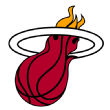
2022-23 record: 44-38
Draft picks in June: No. 18
Free agents: Max Strus, Gabe Vincent, Kevin Love, Cody Zeller, Victor Oladipo (P), Udonis Haslem, Omer Yurtseven (R), Jamal Cain (R) and Orlando Robinson (R)
State of the roster: How do we judge the roster in Miami? Are the Heat the inconsistent 44-win team that finished 25th in offensive efficiency, 27th in 3-point percentage and lost to Atlanta in the first play-in game? Or is Miami the playoff team that beat the top-seeded Milwaukee Bucks in the first-round, the New York Knicks in the second round and sent the Boston Celtics home in the East finals? The Heat ranked third in offensive efficiency and third in 3-point percentage during the playoffs. The answer to that likely falls somewhere in the middle. Heat players missed 289 regular-season games, second-most in the league, forcing coach Erik Spoelstra to use 26 different starting lineups. The injuries to Herro, Butler and Gabe Vincent also saw Miami use six different starting lineups in the playoffs. The Heat will now have to make basketball and business decisions this summer. The basketball part is the value and impact free agents Vincent, Max Strus and Kevin Love played in leading Miami to the Finals. The business part is a franchise high $173 million payroll, 61% of which is dedicated to Butler, Adebayo and Herro, making Miami a luxury tax team for only the second time in nine seasons. There is also a new collective bargaining agreement set to begin in July that restricts and penalizes high spending teams on how they build their roster. However, while the Heat will not have access to the $5 million taxpayer midlevel exception and are not allowed to sign a player bought out of their contract (like they did with Love this past season), the stringent second apron rules (cannot aggregate salaries in a trade, restricted on trading future draft picks, not allowed to send cash in a trade) do not start until the 2024 offseason. While Miami, at least for one season, is not forced to choose between Strus, Vincent or even mandated to shed Kyle Lowry's $29.7 million expiring contract, that changes next offseason. A new contract for Caleb Martin (he has a $7.1 million player option) next year and signing both guards this offseason puts the Heat over the second tax apron in 2024-25. Because of the projected second apron next year, Miami also has a one-year window if it wishes to aggregate salaries and target an All-Star player like Portland Trail Blazers guard Damian Lillard or Washington Wizards guard Bradley Beal. Starting next offseason, the Heat would not be allowed to trade, for example, a package of Herro, Duncan Robinson and draft compensation for a player earning $45 million.
Offseason finances: The Heat dodged the luxury tax in 2022-23 but that will likely not be the case next season. With Herro's extension beginning, Miami has $176 million in salary (including its first-round pick and Oladipo's $9.5 million player option) and are projected to be $14 million over the tax threshold. Oladipo has until June 29 to opt in to his contract. Haywood Highsmith's $1.9 million contract will become guaranteed on July 15.
Top front-office priority: Vincent. The Heat have Bird rights and can exceed the cap to re-sign Vincent despite their high payroll. Vincent started 34 games this season in place of Lowry, averaging 10.8 points on 43% from the field, 36% on 3s and 90% at the line. In the Game 3 win against Boston, Vincent scored a career-high 29 points and made six 3-pointers. The Heat have to decide if Strus is a priority or luxury especially with Herro's $120 million extension set to begin. Strus played the most games (80) of any Heat player, averaging 11.5 points on 35% from 3. A hypothetical $10 million salary for each player would cost the Heat an additional $70 million in luxury tax penalties.
Extension candidates: Three years removed from signing a five-year, $163 million rookie max extension, Adebayo is once again eligible for a new contract. The maximum Miami can offer is an additional two years and $97 million. The extension would start in 2026-27. If Adebayo passes on a new contract, he could sign a four-year, $243 million supermax extension next offseason if he earns All-NBA in 2023-24. Adebayo finished this season second in points in the paint but shot only 63.8% on layups and dunks, a 6.2% decrease from the year before. The drop was the fifth largest among players who attempted more than 200 shots per Second Spectrum. To offset his struggles at the rim, Adebayo saw an increase from 36.8% last year to 46.5% on jumpers. He averaged 2.5 made jumpers per game inside the paint, the most in the NBA.
Other extension candidate: Lowry
Team needs: Shooting, frontcourt and bench depth. After ranking third in catch-and-shoot 3-point field goal percentage last year, the Heat slid all the way to 28th this season. The Heat started five different players at power forward this season: Butler, Love, Highsmith, Caleb Martin and Nikola Jovic. Love has non-Bird rights and the maximum Miami can re-sign him to is a contract that does not exceed $3.8 million.
Future draft assets: The Heat have their own 2024 first-round pick and will send Oklahoma City a top-14 protected first in 2025. The pick is unprotected in 2026 if not conveyed in the prior year. The Heat are allowed to trade their 2023 first and a future first starting two years after the conditions to Oklahoma City have been met. They can put a maximum of three first-round picks into a trade. They have two second-round picks available to trade.

ELIMINATED IN CONFERENCE FINALS
Boston Celtics
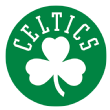
2022-23 record: 57-25
Draft picks in June: No. 35 (via POR)
Free agents: Grant Williams (R), Danilo Gallinari (P), Mike Muscala (T), Blake Griffin, JD Davison (R) and Mfiondu Kabengele (R)
State of the roster: By their own standard, this season was a disappointment for the Celtics. How could it be any less considering Boston returned the same roster that lost to Golden State in six games, added Malcolm Brogdon last offseason and then saw Jaylen Brown and Jayson Tatum selected to the All-NBA team. The Celtics now enter the offseason facing short- and long-term decisions. In the short term, Boston has 13 players under contract from a 57-win team and a decision to make with restricted free agent Grant Williams. Re-signing Williams would put the Celtics into the repeater tax. In the long term, Boston has to decide whether a roster that has two players earning more than $600 million combined is sustainable to compete for a championship under the new collective bargaining agreement. By virtue of their All-NBA selections, Brown is eligible to sign a projected $295 million extension this offseason and then Tatum can sign for $318 million the following summer. If the Celtics' front office decides that Brown and Tatum are franchise players, then the answer is yes. Because Tatum's extension would not kick in until 2025-26, the Celtics are not in danger of exceeding the projected $189 million second apron in 2024-25 after their roster is filled out. The reason is that Brogdon, Marcus Smart, Al Horford, Robert Williams III and Derrick White earn below $22.5 million each. A second apron team can retain its own players but is not allowed to aggregate salaries in a trade or sign a player to the taxpayer midlevel exception. The Celtics would have to navigate the scenario in 2025-26, when $146 million would be committed to Brown, Tatum, Smart and Robert Williams. If the challenge to build the roster becomes too daunting, Brown and Tatum will still be in the prime of their careers, allowing Boston to pivot from either player.
Offseason finances: After paying a franchise-record $74.4 million penalty in 2022-23, the Celtics once again project as a tax team. Including Mike Muscala's $3.5 million team option and Luke Kornet's $2.4 million non-guaranteed salary, Boston is $4 million above the $162 million tax threshold. The Celtics could duck the tax, but that would likely mean letting forwards Danilo Gallinari and Grant Williams go. Gallinari has a $6.8 million player option, and Williams is a restricted free agent. Gallinari has until June 20 to opt into his contract, and June 29 is the deadline for Boston to exercise Muscala's option. There is no guaranteed date on the Kornet contract.
Top front-office priority: It starts with Brown, who was one of seven players to average 27 points and 50% shooting after the All-Star break. Since the NBA instituted the designated veteran extension rule (supermax) in 2017, 11 of the 12 players who met the All-NBA criteria have signed the designated extension. The lone exception was Kawhi Leonard in San Antonio. Under the supermax rules, teams are required to offer an extension for a total of six seasons (including what is left on the contract) but are not mandated to offer the first-year salary starting at 35% of the salary cap. In 2020, Rudy Gobert signed a supermax extension that was $23 million less than the extension of Giannis Antetokounmpo. If Brown were to be traded before signing a supermax extension, he'd be ineligible to sign the extension with his new team. He would also be ineligible to be traded for one year if he were to sign the extension. The deadline for Brown to sign the supermax extension is Oct. 23. The Celtics also have to make a decision on Grant Williams. The forward is eligible to receive a one-year, $8.5 million qualifying offer prior to June 29, which would make him a restricted free agent. Williams shot 44.5% on corner 3-pointers over the past two seasons, running in the top 10 among all players who attempted at least 200. Williams averaged a career-high 25.9 minutes this season but fell out of the rotation in the first two rounds of the playoffs.
Extension candidates: The Celtics can extend Derrick White for an additional three seasons and up to $87.6 million starting Sept. 30. White has two years left on his contract, and the first year of the extension would start in 2025-26. Named second-team All-Defense, White led all guards in total blocks this season and held opponents to under 50% shooting in the paint as the contesting defender, per Second Spectrum tracking. That ranked behind only Rudy Gobert. He is eligible to extend up until Oct. 23. White is deserving of a new contract, but do the pending extensions of Brown and then Tatum put the Celtics in a holding pattern?
Other extension candidates: Tatum (but not supermax eligible until 2024), Brogdon (as of Oct. 1) and Payton Pritchard (rookie)
Team needs: A healthy Gallinari and wing defender. Before he tore an ACL last offseason, the forward averaged 11.7 points and shot 38% from 3 in Atlanta.
Future draft assets: The Celtics have their own first-round pick in the next seven years starting in 2024. Starting the night of the draft, Boston is allowed to trade its 2024 first. The Spurs have the right to swap picks (top-1 protected) in 2028. Boston has only one future second-round pick available.
Los Angeles Lakers
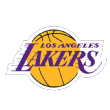
2022-23 record: 43-39
Draft picks in June: Nos. 17, 47
Free agents: Troy Brown Jr., D'Angelo Russell, Malik Beasley (T), Wenyen Gabriel, Rui Hachimura (R), Austin Reaves (R), Dennis Schroder, Tristan Thompson, Lonnie Walker IV and Scotty Pippen Jr. (R)
State of the roster: General manager Rob Pelinka and the front office have a decision to make. Do they search for a third star again, such as Kyrie Irving, but at the expense of their depth? This is extremely unlikely for two reasons. It would be a repeat of the first half of the season when the Lakers struggled with a top-heavy roster. Also, building a roster to compete for a championship centered on three players earning $130 million is extremely difficult under the new collective bargaining agreement. So did posting the league's second-best record after the trade deadline (18-8) and reaching the conference finals confirm the Lakers should bypass cap flexibility and focus on retaining their young free agents? This is more likely when considering the Lakers owe a first-round pick to New Orleans in 2024 and then Utah in 2027. The Lakers could create up to $30.5 million by waiving Jarred Vanderbilt, Mo Bamba, not exercising Malik Beasley's team option and renouncing free agents D'Angelo Russell, Lonnie Walker IV and Rui Hachimura. The cap space would increase to $35 million if they trade Max Christie and their first-round pick. However, the starting number on Irving's max salary is $47 million. In the scenario that the Lakers do utilize their $30.5 million in room, the resources to build the roster around LeBron James and Anthony Davis include restricted free agent Austin Reaves, Christie, the $7.6 million room exception and two draft picks. The rest of the roster would be filled out with players signed to the veteran minimum exception, leaving the Lakers' depth vulnerable. Davis, Irving and James have all failed to reach the 65-game mark in each of the past three seasons. The only scenario where the Lakers could keep Hachimura and acquire Irving (unless of course Irving signs for $13 million as a free agent) is in a complicated sign-and-trade, which would require the cooperation of the Mavericks. Because of the $169.5 million hard cap, Irving would have to take a significant discount for the Lakers to retain Hachimura and Reaves. A sign-and-trade also requires the Lakers to send out salary, something they do not have unless the Bamba and Beasley contracts are guaranteed or Russell agrees to be part of the transaction (like he did in 2019, when he was part of a double sign-and-trade that sent him to Golden State and Kevin Durant to Brooklyn). The Lakers ranked first in points per possession allowed on half-court sets, 14th in offensive efficiency and 18th in 3-point field goal percentage after the trade deadline. In order to avoid the luxury tax and repeater penalty (fourth time in five seasons), Bamba would need to be waived and Beasley's option would need to be declined if the goal is to retain Russell, Walker, Hachimura and Reaves.
Offseason finances: The Lakers are over the $134 million salary cap, a result of the $33.6 million in non-guaranteed salary and the free agent holds of Russell ($41.3M), Hachimura ($18.8M) and Reaves ($2.2M). The Lakers have until June 29 to exercise Beasley's $16.5 million team option and guarantee the contracts of Bamba ($10.3 million) and Vanderbilt ($4.6 million). An area to keep an eye on is the length of contracts the front office is willing to commit past this season. James and Davis could become free agents in 2024 and the Lakers have no salary on their books in 2025-26. The Lakers have non-Bird rights on Walker and can sign him to a contract up to $7.8 million. The Lakers would still have access to their $12.2 million non-taxpayer midlevel exception, but using more than $5 million likely puts them in the tax and also hard caps them. They could also elect not to sign Russell and instead use the full non-tax midlevel exception on one or two players.
Top front office priority: Reaves and Hachimura are priorities. In the final 11 games of the regular season, Reaves averaged 19.8 points and 6.1 assists on 58/46/90 shooting splits. When he shared the floor with James and Davis during the regular season, the Lakers outscored their opponents by 14.3 points per 100 possessions. Reaves averaged 16.9 points and shot 44.2% on 3-pointers in the postseason. He ranked third on the team in scoring in the postseason, only behind James and Davis. Reaves is a restricted free agent, and because he signed a two-year contract, the maximum the Lakers can sign him is to a four-year, $53 million contract. Because of the Arenas provision, the Lakers can match any offer sheet even if a team backloads the contract with cap space. The minimum length of an early-Bird contract is two years, not including an option in the last year. The Lakers are expected to extend Hachimura a $7.7 million qualifying offer by June 29, making the forward a restricted free agent. In the playoffs, Hachimura shot 58.8% from the field, 52.8% on 3-pointers and ranked second (only behind Boston Celtics guard Malcolm Brogdon) in points scored off the bench.
Extension candidates: Building the roster in free agency is not the only decision the Lakers have this offseason. Davis is eligible to sign a three-year, $167.5 million max extension starting on Aug. 4. Davis averaged 25 points, 13.2 rebounds, 2.2 blocks and 55% shooting from the field from Feb. 11 through the end of the regular season. Davis has an early termination option in 2023-24 and could be an unrestricted free agent next offseason. Russell is eligible to sign up to a two-year, $67.6 million extension prior to June 30. Considering their short- and long-term financial outlook, the $30 million per year price tag is a nonstarter for the Lakers. In the first three losses to Denver, Russell averaged only 7 points, while shooting 29.% from the field and 14.3% on 3-pointers.
Other extension candidates: Malik Beasley (thru 6/30 if team option is declined) and Jarred Vanderbilt
Team needs: Depth and shooting.
Future draft assets: Despite owing New Orleans an unprotected first in 2024, the Lakers are allowed to trade their 2023 first-round pick starting the night of the draft. The Pelicans have the right to defer the 2024 first rounder until 2025. The Lakers will send Utah a 2027 top-four protected first. The only future first they can trade is in 2029. Los Angeles has three second-round picks available.

ELIMINATED IN CONFERENCE SEMIFINALS
Philadelphia 76ers

2022-23 record: 54-28
Draft picks in June: None
Free agents: James Harden (P), Montrezl Harrell (P), Danuel House Jr. (P), Jalen McDaniels, Dewayne Dedmon, Shake Milton, Georges Niang, Paul Reed (R), Mac McClung (R) and Louis King (R)
State of the roster: Year 1 of Joel Embiid's supermax extension coincides with a roster facing decisions this offseason. The newly crowned MVP is under contract the next four seasons; however, his 76ers haven't advanced beyond the second round despite having the NBA's third-best record (behind Phoenix and Milwaukee) since 2020-21. The playoff futility now has the 76ers searching for their next head coach after Doc Rivers was fired Tuesday. Besides finding a replacement for Rivers, Harden's free agency now becomes the focal point for how Philadelphia builds the roster, not only next season but in future years. Harden is one of eight 76ers who can become free agents this July. Philadelphia has limited options on how to improve the roster; the 76ers do not have any draft picks in June nor are they allowed to trade a first until 2029 at the earliest. Forward Tobias Harris is entering the last year of his contract. Despite averaging 14.7 points in the regular season and shooting 52.9% from the field in the postseason, Harris could be a financial casualty in 2024-25. Harris is extension eligible but a new contract -- combined with Embiid's $50 million cap hit and new deals for Harden and Tyrese Maxey -- could see the 76ers have over $150 million in salary committed to four players.
Offseason finances: The finances in Philadelphia are predicated on Harden's $35.6 million player option. If Harden declines his option by June 29 but signs a max contract starting at $46.9 million, the 76ers would be $9 million over the tax and nearing the $179.5 million second apron. They would not have access to use the $5 million taxpayer midlevel exception and would be restricted with how much money they could take back in a trade. If Harden leaves and signs with a team that has cap space, the 76ers would still be over the cap, but would be able to use the $12.2 million non-taxpayer midlevel exception. The only way the 76ers could get under the cap if Harden leaves is by trading Harris and his $39.7 million contract and not taking back any salary in return. Danuel House Jr. and Montrezl Harrell have until June 21 to opt in to their contracts for next season. De'Anthony Melton's $8 million contract becomes fully guaranteed on July 3.
Top front office priority: Harden is a priority, but at what cost? The guard is coming off a regular season in which he led the league in assists (he also averaged a career-best assist-turnover ratio), shot the second-highest 3-point percentage in his career and averaged at least 20 points for an 11th consecutive season. Philadelphia has gone 52-26 in the regular season with Harden in the lineup since acquiring him in February 2022. Harden became only the second player over the past 25 years to record multiple games with at least 40 points and go-ahead field goals in the final 30 seconds in a single playoff series. Despite all of that, Harden will turn 34 in August, ranks seventh in total minutes played among active players and had moments during the playoffs when he struggled. In the first-round series against Brooklyn, Harden shot 7-for-30 in the paint (23.3%). That is the worst paint field-goal percentage in a single series by any player since play-by-play was first tracked in 1996-97 (minimum 25 paint FGA). In the second round, Harden shot 9-for-44 from the floor in the 76ers' losses in Games 2, 3 and 6. As for his next contract, Philadelphia is on a level playing field with teams under the cap because of the Over-38 rule. The 76ers can offer a four-year, $210 million contract. A team like the Houston Rockets, which has cap space available, can offer four years and $202 million. There are two questions the front office has to ask. The first: whether there is too much financial exposure to offer a contract that rich (especially considering the new CBA rules and Harden's age), and if so, can the two sides come to a compromise? Remember, Harden sacrificed $14 million last offseason to help Philadelphia sign P.J. Tucker and House. The second question: Who are the 76ers bidding against, and is there a walkway number? Houston, where Harden played for more than eight seasons, projects to have $60 million in room.
Extension candidate to watch: Daryl Morey doesn't frequently hand out rookie extensions. In his tenure in Houston and now Philadelphia, Morey has signed only one former first-round pick to a rookie extension: Harden in 2012 (after acquiring him in a trade from the Oklahoma City Thunder). Maxey could become the second. In his 41 starts this season, Maxey averaged 22.3 points, shot 49.2% from the field and 45.5% from 3. In the minutes Maxey and Harden shared the court, the 76ers outscored opponents by 153 points. Maxey ranked in the top 10 in effective goal percentage in transition this season, according to Second Spectrum tracking. Maxey is likely not a max player (although you can make the argument that neither is Darius Garland, who did get a max rookie extension) but could see a starting salary at $31 million. The first-year salary is 21% of the cap, comparable to the extensions Jordan Poole and Tyler Herro signed last October.
Other extension candidates: Shake Milton (through June 30), Jalen McDaniels (through June 30), Paul Reed (through June 30), Harris, Melton and Furkan Korkmaz (as of July 9)
Team needs: Bench depth. The 76ers likely will see half of their roster enter free agency, including Georges Niang and Paul Reed.
Future draft assets: Philadelphia owes Oklahoma City a top-six-protected first-round pick in 2025. If the first is not sent in 2025, the Thunder will receive either a 2026 or 2027 top-four-protected first. Two years after the first to the Thunder is conveyed, Philadelphia will send Brooklyn a top-eight-protected first in either 2027 or 2028. The 76ers have three second-round picks available to trade.
Golden State Warriors

2022-23 record: 44-38
Draft picks in June: No. 19
Free agents: Draymond Green (P), Donte DiVincenzo (P), JaMychal Green, Andre Iguodala, Ty Jerome (R), Anthony Lamb (R) and Lester Quinones (R)
State of the roster: The Warriors have been here before. After they lost the 2019 Finals to the Toronto Raptors, they lost Kevin Durant to free agency and faced a season without Klay Thompson because of a torn ACL in his left knee. Two years later they lost twice in the play-in tournament and questions turned to whether the dynasty in Golden State was over. The Warriors bounced back to win their fourth championship the next season. However, this offseason is different. The heartbeat of the team, Draymond Green, has a $27.6 million player option and could become a free agent. Thompson is entering the last year of his contract and is eligible for a long-term extension. The architect of the roster, general manager Bob Myers, announced at the end of May that he is stepping down as the franchise's leader. And, finally, the new collective bargaining agreement that starts July 1 places significant restrictions on how Golden State can improve the roster. If Green and Thompson are extended, the Warriors will continue to pay a significant luxury tax penalty in addition to the increased challenges in roster building (no midlevel exception, harder to make trades, etc.). There is also the question as to how much trust the coaching staff has in Jordan Poole. Signed to a four-year $123 million extension last October, Poole had an inconsistent regular season and struggled in the postseason.
Offseason finances: If the roster stays intact, including Green opting-in to his contract, the Warriors project to pay a combined $457 million in salary and tax penalties. That number will increase to $500 million once the roster is filled out in free agency. If Green and Donte DiVincenzo do not return, Golden State is still over the $179.5 million second apron and will not have access to the $5 million taxpayer midlevel exception. Because of that, Golden State is not allowed to offer free agent JaMychal Green a contract exceeding $3.4 million and will have only the veteran minimum exception to sign free agents. The Warriors will also be restricted to taking back no more than 110% of salary in any trade. For example, the maximum salary allowed in return in a hypothetical Poole trade is $30.2 million (it was $34.3 million under the old CBA). Green and DiVincenzo have until June 29 to opt in to their contracts.
Top front-office priority: Whoever steps in to replace Myers faces a difficult challenge, starting with Green. It is naïve to think Green's days with the Warriors are done. Yes, Green can decline his player option and enter free agency, but is there a team outside of Golden State willing to commit to a long-term lucrative contract? The teams with cap space include Detroit, Indiana, Houston, Oklahoma City, Orlando and San Antonio. If there is not a safety net with one of those teams, the smart play would be for Green to opt into his contract for next season. After that happens, would Green sign a team-friendly extension for the third straight time? Would the Warriors even offer a long-term deal? Green, 33, ranks in the top 10 in total minutes played (including the playoffs) since the 2014-15 season. The Warriors finished this season with a defensive rating of 109.6 with Green on the court and 115.3 when he was off. He held opponents to 39% shooting as the closest defender. That ranked second among players to contest at least 500 shots, trailing only Kevin Durant, according to Second Spectrum tracking. Green could also opt in then ask to be traded, something Kyrie Irving did with the Brooklyn Nets this past season. DiVincenzo has a $4.7 million player option. If he declines, the maximum that Golden State can offer in the first year of a new contract is $5.4 million. That is likely a nonstarter unless DiVincenzo signs a below-market contract to establish early Bird rights in 2024. This would allow the guard to sign up to a four-year contract with a starting salary of $12 million next summer.
Extension candidate to watch: Is there a compromise on an extension for Thompson? After missing the better part of 2½ seasons, Thompson played 69 games this year, posting the third-best scoring average of his career. While he shot over 40% from deep for the ninth time in 10 seasons, he shot under 60% on layups and dunks for the first time since 2014-15. His 47% shooting on 2-pointers was his worst in a season under Steve Kerr. He is eligible to sign a four-year, $220 million extension, but a contract that size is reckless considering that Thompson would be set to earn $61 million in 2027-28, when he turns 37. Additionally, the Warriors have no players (including Stephen Curry), under contract past 2026-27. Curry has three years left on his deal.
Other extension candidate: Green (through June 30 and next season if player option exercised)
Team needs: Even with a team that ranked second in 3-point percentage, there is a need for frontcourt help that can stretch the floor. Green shot 30.5% from 3 and Kevon Looney did not attempt a long-distance shot. Reserve Anthony Lamb shot 36.7% but is a free agent.
Future draft assets: The Warriors owe Memphis a 2024 top-4 protected first. The pick is top-1 protected in 2025 and unprotected in 2026. The earliest Golden State can trade a first is two years after the conditions to Memphis have been met. The Warriors have four future second-round picks available to use in a trade. If the Warriors are in the second apron in 2024-25, their 2032 first-round pick will become frozen and cannot be traded. Their 2032 first would also fall to the later part of the round if Golden State is in the second apron three-out-five seasons starting in 2024-25.
New York Knicks
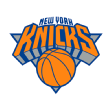
2022-23 record: 47-35
Draft picks in June: None
Note: New York will receive the Mavericks' 2023 first-round if it falls outside of the top 10 after the lottery.
Free agents: Josh Hart (P), Derrick Rose (T), Miles McBride (T), Trevor Keels (R) and Duane Washington Jr. (R)
State of the roster: A 10-win improvement from last season and a second-round playoff appearance -- the Knicks' first since 2013 -- indicates there is stability in New York. The Knicks are also well-positioned financially, with no player earning more than $28 million and 11 first-round picks at their disposal in the next seven years. If the next disgruntled All-Star becomes available, New York has the assets to make a trade and not ruin future flexibility even with the new collective bargaining agreement rules set to begin in July. While all that is positive long term, the loss to Miami opens up the question whether the roster has the upside to be more than a good regular-season team. The answer to that lies in the play of Julius Randle. An All-Star during the regular season, the forward was a nonfactor not only in the first and second rounds this year but also the 2021 playoff loss to the Atlanta Hawks.
Offseason finances: The Knicks' four-year streak of being under the cap is expected to end this offseason. Not including the team options of Derrick Rose, Miles McBride and a partially guaranteed contract on Jericho Sims, New York has $146.8 million in salary, $14 million over the salary cap. New York has until June 24 to exercise Rose's $15.6 million team option. The veteran is likely a roster casualty since his contract would put New York into the luxury tax. The Knicks also have until June 29 to exercise McBride's $1.9 million team option. The salary protection on Sims' $1.9 million contract increases from $600K to $1.2 million on July 16. It becomes fully guaranteed on Aug. 16.
Top front-office priority: The Knicks' acquisition of Josh Hart before the trade deadline was for both basketball and business reasons. The basketball part is the do-everything mentality of Hart and the impact he has on both ends of the court. Among all guards in the regular season, Hart ranked third in rebounds (behind Luka Doncic and Josh Giddey) and second in offensive rebounds (behind only Giddey). Opponents shot 41% when Hart was the contesting defender in his 25 games with the Knicks. That ranked in the top-10 among more than 100 players to contest 250 shots after Feb. 10 according to Second Spectrum tracking.
The business part is that because Hart was acquired in a trade, New York inherits his Bird rights and can exceed the cap to sign him. If Hart finished the season in Portland and then became a free agent, New York's only mechanism to sign the guard would have been the $12.2 million nontaxpayer midlevel exception and that likely would have been a nonstarter. Hart has until June 29 to decline his $12.9 million player option. Because the contract becomes nonguaranteed if he opts-in, the likely scenario is that he enters free agency and seeks a long-term deal. A contract starting in the $16 million to $17 million range gives New York flexibility to remain under the $162 million tax threshold. There is also a scenario where Hart opts-in (New York would then guarantee the contract) and then extends on Aug. 10 for up to four years and $81.2 million. This would allow New York to use at least $7 million of its nontax midlevel and remain below the tax.
Extension candidate to watch: The Knicks once again are faced with the realization that there is a significant cost to drafting, developing and then retaining their former draft picks. A year removed from committing four years and $107 million to RJ Barrett, New York has a decision on whether to extend Immanuel Quickley and Obi Toppin. In the 2024 offseason the Knicks will face the same decision on Quentin Grimes. In 21 games as a starter, Quickley averaged 22.6 points, 5.1 assists, 47% from the field and 40% on 3-pointers. He ranked in the top 10 in field goal percentage allowed as the closest defender among players to defend at least 500 shots per Second Spectrum. An extension for Toppin is likely tabled until there is a clear role defined moving forward, especially with Randle under contract for the next three seasons. The two players shared the court for only 72 minutes this season. Toppin allowed opponents to record 56.3% effective field goal percentage as the contesting defender. That ranked 292nd among 312 players to contest 300 shots per Second Spectrum.
Team needs: Bench scoring. The Knicks' reserves ranked 26th in scoring and 24th in 3-point percentage.
Future draft assets: The Knicks have their own first in the next six seasons along with four additional firsts acquired in trades. They also have three second-round picks available to trade. Here is a breakdown of their future firsts:
Top-10 protected from Dallas (2024 or 2025; could convey this year if Dallas' pick falls out of top 10)
Dallas will send a 2025 second if not conveyedTop-18 protected from Detroit (2024, top 13 in 2025, top 11 in 2026 and top 9 in 2027)
Detroit will send a 2027 second if not conveyedTop-12 protected from Washington (2024, top 10 in 2025 and top 8 in 2026)
Washington will send seconds in 2026 and 2027 if not conveyedTop-4 protected from Milwaukee (2025)
Phoenix Suns

2022-23 record: 45-37
Draft picks in June: No. 52
Free agents: Bismack Biyombo, Torrey Craig, Jock Landale (R), Damion Lee, Terrence Ross, Josh Okogie, Darius Bazley (R), T.J. Warren, Saben Lee (R) and Ish Wainright (T)
State of the roster: Even with the addition of Kevin Durant, the Suns are further away from competing for a championship than the prior two seasons. The second-round series loss to Denver proved that. Durant and Devin Booker are franchise players but the Nuggets exposed a top-heavy Phoenix roster that is lacking significant depth. The offseason started with 2022 Coach of the Year Monty Williams being dismissed and the Suns hiring former Lakers coach Frank Vogel to replace him. However, the reality is Phoenix is limited in how it can upgrade the roster in the offseason. Phoenix is nearing the $179.5 million second apron and likely will not have the $5 million taxpayer midlevel exception available (to be fair, Phoenix had access to the $6.4 million tax midlevel last year and did not use it). The Suns also do not have a first-round pick in June, nor are they allowed to trade a future first in any deal. The offseason plan consists of three options. They can take the same approach from last year and fill the roster with players signed to the veterans minimum. That comes with a huge risk given that none of Durant, Booker and Chris Paul reached the 60-game mark this season. Since returning from his Achilles injury in 2020, Durant has played 137 games in three seasons. The second option would be to bring back forwards Josh Okogie and Torrey Craig and center Jock Landale, then try to find bargains in free agency. Landale and Craig have early Bird rights and Phoenix can sign either player to a contract up to $11.9 million and a minimum of two seasons. Landale is also a restricted free agent. Okogie signed a one-year minimum contract and cannot sign a contract exceeding $2.8 million. The third option would be to explore trades that involve Paul, Deandre Ayton, Landry Shamet or Cameron Payne. Because of its finances, Phoenix cannot take back more than 110% in salary and faces restrictions in doing any kind of sign-and-trade deal that brings in a free agent. For example, a hypothetical trade that would send Ayton and Paul to the Mavericks for Tim Hardaway Jr. and a signed-and-traded Kyrie Irving would not be allowed because it triggers the $169 million hard cap.
Offseason finances: The Suns have only seven players under contract but once again project to be in the tax. The reason is that four of those players (Booker, Durant, Ayton and Paul) combine to earn 87% of the Suns' committed $164 million payroll. Paul's $30.8 million has $15.8 million in salary protection with the balance guaranteed June 28. Payne's $6.5 million contract becomes guaranteed June 30. If Payne is waived, Phoenix would incur a $2 million cap hit. In the unlikely scenario that both Paul and Payne are waived, Phoenix would still be over the salary cap and have only the $12.2 million non-taxpayer midlevel exception and $4.5 million biannual exception to use in free agency.
Top front-office priority: It starts with Paul. The likelihood is that the 38-year-old guard is on the Suns roster entering free agency. Waving Paul would save the Suns some luxury tax money, but would also eliminate a tradable contract -- and a player who can still contribute when healthy. There is a scenario in which Phoenix could waive Paul and then sign him to part of its $12.2 million non-tax midlevel. That, however, would hard-cap the team if the contract is for more than $5 million, possibly costing restricted free agent Landale. Paul finished the season fifth in assists and Phoenix averaged 123.8 points per 100 possessions when he was on the court during the playoffs with Booker and Durant. That ranked in the 96th percentile of all postseason lineups, according to Cleaning the Glass. The concern, however, is the veteran's durability. Paul played 59 games in the 2022-23 season, his fewest since 2018-19. His $30 million salary for 2024-25 is non-guaranteed. Next is gauging trade options for Ayton. The Suns should explore dealing him and his $32.5 million salary for multiple players to help balance the roster. Ayton is coming off a season in which he averaged 18.0 points, the second-highest mark of his career, and more than nine rebounds for the fifth consecutive season. However, he is something of an afterthought when he shares the court with Paul, Durant and Booker. Ayton averaged 82.7 touches per 100 possessions this season, according to Second Spectrum. But when sharing the floor with Paul, Booker and Durant, that figure dropped to 70.9. His average touch length and dribbles per touch also dropped compared to his regular-season averages.
Extension candidate to watch: Paul and Payne are the only two players eligible to sign an extension this offseason. It is unlikely either will be offered a new deal.
Team needs: The front office has work to do. Besides Durant, Booker, and Ayton, there are needs at every position. The Suns ranked second to last in the playoffs in bench scoring.
Future draft assets: The Suns owe Brooklyn unprotected first-round picks in 2025, 2027 and 2029. The Nets also have the right to swap firsts in 2028. Phoenix is not allowed to trade a first in any season but can offer pick swaps in 2024 and 2026. Phoenix has five second-round picks available to trade.

ELIMINATED IN FIRST ROUND
Sacramento Kings
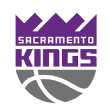
2022-23 record: 48-34
Draft picks in June: Nos. 24, 38 (via IND), 54
Free agents: Harrison Barnes, Terence Davis, Matthew Dellavedova, Alex Len, Trey Lyles, Chimezie Metu, Neemias Queta (R), Keon Ellis (R) and Kessler Edwards (T)
State of the roster: The 48-win regular season that earned the Kings a top-three seed was not a fluke. If you want proof, take a look at the hard-fought first-round loss to the defending champion Golden State Warriors. The roster in Sacramento, led by Coach of the Year Mike Brown and All-Stars De'Aaron Fox and Domantas Sabonis, is in position to have continued success. Fox, Sabonis, starters Keegan Murray and Kevin Huerter, and key reserves Malik Monk and Davion Mitchell are under contract through at least next season. Harrison Barnes is the only starter who is a free agent. Retaining Barnes, along with reserves Trey Lyles, Terence Davis and Alex Len, should be a priority for the Kings front office. The Kings have the financial flexibility to sign the four players and use their $12.2 million non-taxpayer midlevel exception and still remain below the $162 million luxury tax. Fox is the only player earning more than $21 million. As with any team that deals with success, the challenge is managing expectations in the future. The Kings went through a close-to-perfect regular season and led the league in fewest starting lineups (nine) and fewest games missed because of injury (54). As a result, Sacramento dealt with minimal adversity. The starting lineup of Fox, Kevin Huerter, Keegan Murray, Harrison Barnes and Sabonis played 63 games together, 15 more than any other five-man lineup this season.
Offseason finances: The Kings have $104 million in guaranteed salary but are over the $134 million cap because of the nearly $40 million in free agent holds (including $27.5 million for Harrison Barnes). The lone route to create significant room is to renounce their own free agents. They will have the $12.2 million non-taxpayer midlevel and $4.5 million biannual exceptions available if they act as a team over the cap. The Kings have until June 29 to exercise the $1.9 million option of Kessler Edwards. PJ Dozier's $2.4 million contract becomes guaranteed on July 10.
Top front-office priority: A year ago the Kings prioritized adding shooting, evident by the signing of Monk and trade for Huerter. This offseason, the focus is to retain their own free agents, starting with Barnes. The forward has played at least 70 games in nine out the past 11 seasons, including 82 this past year. Barnes averaged 15 points per game this season, his fewest since 2019-20, and has seen a small regression on shooting the ball from deep. He shot 36.6% on catch-and-shoot 3-pointers, down from 42.2% last season according to Second Spectrum tracking. Barnes is eligible to sign a four-year, $98.6 million extension through June 30, with a starting salary of $22 million next season. If an agreement is not reached, Barnes will be an unrestricted free agent and Sacramento can sign him and exceed the cap. Lyles was reliable coming off the bench, averaging 7.6 points, but struggled shooting it from deep in the series loss to Golden State. The Kings can use early-Bird rights to re-sign Lyles, but the next contract has to be a minimum of two years and cannot exceed $11.9 million in the first season.
Extension candidate to watch: Sabonis is both renegotiation- and extension-eligible. However, because there are restrictions with both, the All-Star is likely to play out his contract and become a free agent in 2024. A renegotiation of his $19.4 million contract requires the Kings to have cap space, something that is not available unless free agents Barnes, Lyles, Len and Terrence Davis are not brought back or Sacramento finds a taker for Richaun Holmes's contract (which has two years and $25 million remaining). A Holmes trade would still require the Kings to prioritize what free agents they wish to retain. Sabonis is also eligible to be extended for an additional four years and $122 million without a renegotiation. The extension is $132 million less than the five-year deal he could sign with the Kings after becoming a free agent, and $65 million less than a four-year max deal with a team that has cap space. Fox is eligible to extend for an additional two years and $92.6 million. The first year of the extension would start in 2026-27. If Fox is named All-NBA, the guard is not supermax eligible because he is one year short of the service criteria. He could become supermax eligible in the 2024 offseason, but only if he earns All-NBA in 2023-24.
Other extension candidates: Holmes and Chimezie Metu (through June 30)
Team needs: Addressing the defense and fortifying the frontcourt depth. The Kings ranked 24th in defensive efficiency and 26th in opponents points allowed in the paint. Besides Murray, the lone forwards under contract are Edwards and Dozier.
Future draft assets: The Kings owe Atlanta a 2024 top-14 protected first. The pick is top-12 protected in 2025 and top-10 protected in 2026. If the first is not conveyed in any of the three seasons, Sacramento will send 2026 and 2027 second-round picks to Atlanta. The Kings have seven second-round picks available to trade.
Memphis Grizzlies

2022-23 record: 51-31
Draft picks in June: Nos. 25, 45 (via MIN), 56
Free agents: Dillon Brooks and Xavier Tillman (T)
State of the roster: There is a long line of teams wishing Ja Morant, Desmond Bane and Jaren Jackson Jr. were on their roster. Who wouldn't want three of the top players under the age of 25 to build around? The makeup of their young core is a reason why the Grizzlies ranked No. 1 in the Future Power Rankings before the season started. But as we learned this season and playoffs, individual talent means nothing if there is no buy-in and sacrifice from each player. If Memphis wants to take the next step, there has to be trust, discipline and maturation in the locker room. If not, the window to compete for a championship will close and the Grizzlies will become one of the great "what if" teams in recent memory. As for the roster, Memphis returns 13 players and has three draft picks in June, the $12.2 million non-taxpayer midlevel exception and control of its own first-round pick in future years.The big question is if Dillon Brooks will be rewarded with a new contract or if the Grizzlies go in a different direction. The big question is how does Memphis replace free agent Dillon Brooks?
Offseason finances: Morant's rookie max extension begins this season, but the Grizzlies are still $20 million below the luxury tax threshold even accounting for the cap hold on their first-round pick. However, the tax flexibility could decrease by $7 million if Morant is named to an All-NBA team (the requirement to play 65 games to qualify doesn't kick in until next season). The last time Memphis was a tax team was 2005-06, and it has never paid a tax penalty under owner Robert Pera. The Grizzlies have until June 27 to exercise Xavier Tillman's $1.9 million team option.
Top front-office priority: The free agency of Brooks is one of the most polarizing negotiations this offseason. On one end the forward is one of the top defensive players and should be rewarded with a lucrative contract. Brooks held 2022-23 All-Stars to a 46% effective field goal percentage this season, the lowest allowed among 72 players to match up at least 500 times with All-Stars according to Second Spectrum tracking. On the other side, Brooks is a liability on the offense and with his antics on the court. During the regular season, Brooks shot 34% on jumpers, ranking 62nd among 66 players with at least 500 attempts. Brooks shot 36% on wide-open jumpers (when the closest defender is at least 6 feet away) per Second Spectrum. That ranked 44th among 46 players with at least 200 attempts. Since entering the NBA in 2017, Brooks has racked up 58 technical fouls, including a league-high 18 this season, and been ejected five times. Brooks is eligible to sign a four-year, $61 million extension prior to July 1 and will be an unrestricted free agent after that. Not bringing Brooks back leaves the Grizzlies with former first round picks Ziaire Williams and David Roddy as options to replace him, or they could use their midlevel exception. The Grizzlies are likely not inclined to bring Brooks back, leaving a gaping hole at small forward. Memphis has former first round picks Ziaire Williams and David Roddy as options to replace him, or they could use their $12.2 million non-tax midlevel exception. Williams started 31 games as a rookie in place of Brooks, but dealt with various injuries this season. The Grizzlies could also do a sign-and-trade to get back assets rather than letting Brooks walk, but Brooks would have to agree and his new contract would have to be at least three years (though only the first year has to be guaranteed).
Extension candidate to watch: Six of the 15 players on the Grizzlies roster have been extended in the past three years, with Bane and Tillman possibly joining that group this summer. Bane averaged a career-high 21.5 points per game this season, shot 47.9% from the field and shot greater than 40% from 3 for a third straight season. Bane ranked fourth in 3-point field goal percentage when going off the dribble among 47 players with at least 150 attempts. Last season, he was first in this same category by a significant margin. His next contract should start in the $27 million-to-$28 million range, comparable to the extensions Tyler Herro and Jordan Poole signed in October. The Grizzlies are in a unique spot with Tillman because he has a $1.8 million team option. If the option is exercised, Tillman will be on a team-friendly salary but will become an unrestricted free agent in 2024. The two sides could work out an extension that cannot exceed four years and $71 million. If the option is declined, Tillman would become a restricted free agent and Memphis would have the right to match an offer sheet. However, doing that and bringing Brooks back could put the Grizzlies into the luxury tax.
Team needs: Shooting. The Grizzlies took the 11th-most 3-point attempts in the league this season, but even with Morant and Bane in the backcourt, Memphis finished the regular season 23rd in 3-point percentage.
Future draft assets: Memphis controls its own first in future seasons and is also owed a first-round pick from Golden State. The pick is top-four protected in 2024, top-one in 2025 and unprotected in 2026. The Grizzlies have four future second-round picks available to trade.
Atlanta Hawks
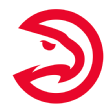
2022-23 record: 41-41
Draft picks in June: Nos. 15, 46 (via NOP)
Free agents: Aaron Holiday and Trent Forrest (R)
State of the roster: Consider the 28 games (including the postseason) since head coach Quin Snyder took over in late February as an audition for next season. Snyder took over an Atlanta team that had gone 31-30 and posted a 10-11 record before winning a play-in game and losing in the first round. Under Snyder, the Hawks saw a jump in their offensive efficiency from No. 11 to No. 4 in the NBA, but they continued to rank in the bottom 10 in defensive efficiency. The big offseason question is if the backcourt of Trae Young and Dejounte Murray can coexist not only next season but in the future. In 352 regular-season minutes when the two shared the court under Snyder, Atlanta had a minus-7.6 net efficiency, including a 111.7 offensive rating. For comparison, only five teams had a worse offensive efficiency. Murray is set to enter the last year of his contract and likely will not sign an extension, while Young has four years and $178 million left on his deal. Considering that Atlanta has no financial flexibility and 14 players under contract next season, improvements within the roster will come either from having a full season under Snyder, or via a trade.
Offseason finances: Bogdan Bogdanovic's four-year, $68 million extension all but guarantees that Atlanta will be in the luxury tax entering the offseason. Atlanta is right at the $162 million tax threshold in guaranteed salary and has an additional $12.1 million of non-guaranteed salary (Bruno Fernando, Garrison Mathews, Vit Krejci, Tyrese Martin) and a first-round pick. The $174 million in contracts pushes Atlanta over the first apron, limiting the amount of money the Hawks can take back in a trade. The contracts of Mathews and Fernando become guaranteed on June 29. Since buying the team in 2014, owner Tony Ressler has not paid a luxury tax penalty.
Top front-office priority: The new collective bargaining agreement will force the Hawks to get their future finances in order this offseason. Atlanta has $145 million in projected salary in 2024-25, but that does not include new contracts for Murray, Onyeka Okongwu and Saddiq Bey. Keeping the roster intact a year from now would likely see the Atlanta payroll exceed the $188 million second apron, putting additional restrictions on the Hawks. Atlanta will likely look at John Collins to trim payroll. Since signing a five-year, $125 million contract in 2021, Collins' name has been repeatedly mentioned in trade rumors. Collins averaged 13.2 PPG under Snyder and saw his 3-point percentage improve from 26% to 36%. He is owed $79 million over the next three seasons.
Extension candidate to watch: The new CBA did not help Atlanta when it comes to an extension for Murray. The guard is eligible to sign a four-year, $114 million extension with a starting salary of $25.5 million in 2024-25. That salary is $17 million less than the maximum salary in the first year. The Hawks should be aggressive in extension talks with Okongwu and Bey. Okongwu ranked fifth in total second-chance points and in the top 10 in offensive rebounding percentage after Feb. 5. A new contract for Okongwu would start in 2024-25, the last year Clint Capela is under contract. After being acquired at the trade deadline, Bey started six games, averaging 14.7 points, 50.7% from the field and 40.5% on 3s. He has a 56.3% effective field goal percentage under Snyder, up from 49.5% with the Pistons and Hawks prior to Snyder's arrival. Both players are eligible to sign a five-year extension up until Oct. 23.
Other extension candidates: Capela (as of Aug. 13) and Krejci (as of Aug. 15)
Team needs: Defense. The Hawks ranked 29th in paint points allowed after Feb. 28, ahead of only the Indiana Pacers. They have allowed the second-most layup and dunk attempts since Snyder took over.
Future draft assets: The Hawks mortgaged their future in the Murray trade, sending two of their own unprotected firsts (2025 and 2027), a pick swap (2026) and a pick they were owed from Charlotte to the San Antonio Spurs. The future looks bleak, especially if Murray leaves as a free agent in 2024. Still, the Hawks do have their own first in June along with the possibility of two firsts in 2024. As part of the Kevin Huerter trade, Atlanta has a 2024 top-14-protected first from the Sacramento Kings. If the 2024 first is not conveyed, Atlanta will receive a first in 2025 (top-12 protected) or 2026 (top-11 protected). The Hawks are allowed to trade their own 2023 first, the Sacramento first and a first in 2029. The Hawks have five future second-round picks available to trade.
Milwaukee Bucks

2022-23 record: 58-24
Draft picks in June: No. 58
Free agents: Khris Middleton (P), Brook Lopez, Jae Crowder, Joe Ingles, Wesley Matthews, Jevon Carter (P), Thanasis Antetokounmpo, Goran Dragic and AJ Green (R)
State of the roster: For the first time since 2018, the Giannis Antetokounmpo-led Bucks were eliminated in the first round. However, unlike last time (when Milwaukee was the 7-seed), the expectations were different this year. Milwaukee entered the playoffs with the best record in the NBA, only to become the sixth No. 1 seed to lose in the first round. The early exit eventually would cost coach Mike Budenholzer his job. How this Bucks team regroups is dependent on two factors. The first is how much ownership is willing to commit financially to keep the starting five intact. Since the 2020-21 season, Milwaukee has paid $136 million toward the luxury tax. That figure is likely to increase if Brook Lopez signs a new contract. Lopez is an unrestricted free agent and Khris Middleton has a player option. The second is reshaping a bench that has seven free agents. Milwaukee does not have a first-round pick and is unlikely to have available the $5 million tax midlevel exception.
Offseason finances: Including Middleton's $40.4 million player option, Milwaukee has $157 million in salary, $5 million below the luxury tax threshold. If Middleton opts in by the June 21 deadline and Lopez re-signs, the Bucks will be a tax team for a fourth straight season and will pay a significant penalty because of the repeater tax. Backup guard Jevon Carter has until June 29 to opt in to his $2.2 million contract.
Top front-office priority: Besides hiring the next coach, it starts with Lopez and Middleton. Likely to see his name on the All-Defensive team for the second time in four years, Lopez led the NBA in total blocks and total contested shots per Second Spectrum tracking. His 1,362 shots contested were 445 more than any player. Lopez held opponents to 50.2% shooting at the rim, third best among players to defend at least 100 shots per Second Spectrum. He also helped on more drives than any other player in the league, which played a role in the Bucks having the second-best defense against drives in the regular season. Because of the over-38 rule (Lopez turned 35 in April), the maximum contract that Milwaukee can offer to Lopez is three years and $54 million. Middleton has played more than 20,000 minutes since the 2013-14 season and has a decision to make with his player option. He can opt in and look to extend or become a free agent and sign at a lower salary but with more years attached. During the four-season span from 2017-18 to 2020-21, Middleton shot 44.4% on off-the-dribble jumpers, which ranked fourth best among 44 players with at least 1,000 attempts per Second Spectrum tracking, trailing only Chris Paul, Kyrie Irving and Kevin Durant. But in the past two seasons, that percentage has dropped to 39.5%, which ranks middle of the pack. Middleton has missed 67 games over the past two seasons with various injuries after missing just 73 games in his first eight seasons in Milwaukee. The reality is that at this stage of his career, Middleton is not a $40 million player, but Milwaukee cannot afford to not bring him back.
Extension candidate to watch: Nearly 2½ years after signing a five-year, $228 million supermax extension, Antetokounmpo will be eligible to tack on an additional two or three years starting on Sept. 22. The three-year, $173.5 million extension would see Antetokounmpo replace the $51.9 million player option in 2025-26 with a new salary starting at $53.5 million, plus an additional two years at $57.8 and $62.1 million. A two-year, $118.6 million extension would have Antetokounmpo opt in to the final year of his current deal and then extending. Either option keeps the former MVP in a Milwaukee uniform through the 2027-28 season. The deadline to sign an extension is Oct. 23.
Other extension candidates: Crowder (through June 30) and Grayson Allen (as of Oct. 1)
Team needs: Wing depth. The Crowder trade was thought to bolster the Bucks bench. Instead, the veteran played a total of 42 minutes in the playoffs, including a DNP in Game 4. Crowder is an unrestricted free agent. Joe Ingles averaged 7.7 points and shot 48.9% from 3 after the All-Star break, but because he signed a one-year contract, Milwaukee doesn't have Bird rights on him and is limited to offering a new contract starting at $7.7 million.
Future draft assets: The Bucks will send their 2025 pick to New Orleans (if it's in the top four) or New York and owe an unprotected first-round pick to the Pelicans in 2027. The Pelicans also have the right to swap firsts with Milwaukee in 2024 and 2026. The earliest Milwaukee can trade a first is in 2029. They have two second-round picks available to trade.
Cleveland Cavaliers

2022-23 record: 51-31
Draft picks in June: No. 49 (via GS)
Free agents: Caris LeVert, Raul Neto, Robin Lopez, Danny Green, Lamar Stevens (T), Dylan Windler (R), Mamadi Diakite (R) and Isaiah Mobley (R)
State of the roster: There are two ways to look at the season in Cleveland. There was the 51-win team that earned a top-four seed in the East. Then there was the shadow of that same regular-season team that was outworked (offensive rebounds and second-chance points) in the five-game playoff loss to the New York Knicks. The silver lining for the Cavs is that there is room to grow, despite having depleted their draft assets in the Donovan Mitchell trade. Cleveland has nine players under the age of 26 and GM Koby Altman has the resources to improve the roster -- but at a cost. The first option for Cleveland would be to run back the same roster; the Cavs already have 10 players under contract for 2023-24 (including Mitchell, Darius Garland, Evan Mobley and Jarrett Allen) and could re-sign free agent Caris LeVert and add a combination of off-ball wing shooting and frontcourt depth with its $12.2 million midlevel exception. The second option would be to explore what trade options are out there for Ricky Rubio, Cedi Osman, Isaac Okoro and Dean Wade. Outside of the defensive effort of Okoro, the Cavaliers got little offensive production from their bench in the New York series. Okoro averaged 6.4 points per game this season, with half of his shots coming on 3-pointers. He had an average separation of 9.3 feet between himself and the closest defender, the largest among players with at least 150 3-point attempts, according to Second Spectrum tracking. The third and more drastic option would be to gauge the value of Allen in trades. Would Cleveland benefit from moving him for multiple players to upgrade the bench, then sliding Mobley to the five? With Mobley at center, Cleveland averaged 117.4 points per 100 possessions and had a plus-8.2 net efficiency. However, with Mobley at center, the Cavaliers also had a 21.3% offensive rebounding percentage and allowed an offensive rebounding percentage of 31.8%. Both ranked in the bottom-15 percent. Allen has three years and $60 million left on a team-friendly contract.
Offseason finances: The Cavaliers are considered one of those in-between teams. They are not close to the $162 million tax threshold, nor are they a cap space team. Including the $6.7 million non-guaranteed contracts of Osman and Lamar Stevens, Cleveland has $125 million in salary, $37 million below the luxury tax. Osman's salary becomes guaranteed on June 29, and Stevens has no salary protection despite having a team option.
Top front-office priority: Finding a compromise on a new contract for LeVert (something like two years, $36 million). The four-year, $101 million extension that LeVert is eligible to sign prior to June 30 is likely a nonstarter considering the $25 million-per-year cap hit is an overpay. LeVert was wildly inconsistent during the regular season, especially playing off the ball. Per Cleaning the Glass, LeVert ranked near the bottom in effective field goal percentage and shot 36.4% during the regular season on attempts outside of five feet. LeVert averaged 12.5 points and shot 46.6% from 3 after the All-Star break. If LeVert leaves for nothing, Cleveland will have the $12.2 million non-taxpayer midlevel exception to replace him.
Extension candidate to watch: The Cavaliers are likely in a holding pattern when it comes to an extension for Donovan Mitchell, who has three years left on his deal, including a player option for 2025-26. Cleveland could offer Mitchell a three-year, $135.5 million extension if Mitchell declines the player option, or two years and $92.6 million if he opts in for 2025-26. If Mitchell elects to play out his contract and become a free agent in 2025, he would then be eligible to sign a five-year, $257 million contract in Cleveland. He is not supermax eligible because he was traded after the end of his rookie contract.
Other extension candidates: Stevens (if team option is exercised), Osman and Okoro (rookie)
Team needs: Bench depth. The Cavaliers ranked 28th in the NBA in bench scoring, ahead of only Toronto and Portland. The reserves ranked 19th in 3-point field percentage, with 51.6% of their shots coming from beyond the arc.
Future draft assets: The Cavaliers owe the Jazz unprotected first-round picks in 2025, 2027 and 2029. The Jazz also have the right to swap firsts in 2026 and 2028. Cleveland is not allowed to trade a future first in any season. They have six future second-round picks available.
LA Clippers

2022-23 record: 44-38
Draft picks in June: Nos. 30 (via MIL), 48
Free agents: Mason Plumlee, Russell Westbrook, Xavier Moon (R) and Moussa Diabate (R)
State of the roster: Different season, same end result for the Clippers: Eliminated from the postseason for the second time in three seasons with Kawhi Leonard and Paul George on the sidelines in street clothes. The $356 million investment that owner Steve Ballmer made to the roster this season saw George and Leonard play a total of 38 games together, going 24-14 in those games. The offseason brings the same question we've asked each of the previous three years: Can Leonard and George stay healthy enough for the Clippers to legitimately compete for a championship? The answer to that is unknown, but if history is the deciding factor, it seems unlikely. The good news is that the deepest roster in the NBA returns 13 players, with Russell Westbrook and Mason Plumlee as the only pending free agents. Because of the new collective bargaining agreement, the Clippers have only the $3.8 million non-Bird exception to offer Westbrook, who has earned $339 million in his career. The Clippers do have Plumlee's Bird rights and can exceed the salary cap to sign the center, despite being over the $162 million tax threshold. A contract that starts at $8 million would cost an additional $55 million toward the luxury tax. The Clippers do have 11 players earning between $1.8 million and $20 million, including $60 million in expiring contracts, and have shown an aggressiveness to turning over the roster each year. Because they are projected over the $179.5 million second apron, they can take back only 110% of salary sent out in any trade. The following season, LA cannot aggregate contracts in a trade if it is in the second apron again.
Offseason finances: The Clippers are over the tax for the fourth straight season, making them a repeater tax team. With $202 million in salary, including Eric Gordon's $20.9 million non-guaranteed contract, LA is projected to pay a $175 million penalty. The $377 million in committed salary is the second highest in league history. Gordon's contract becomes guaranteed on June 28. The $1.8 million contracts of Brandon Boston Jr. and Jason Preston become guaranteed on June 30 and July 2.
Top front-office priority: It starts with determining how the new cap rules impact the roster not only this offseason but in 2024-25. Three big things happen that year: The Clippers move into the Intuit Dome, Leonard and George can become free agents, and teams will be penalized significantly more for being over the second apron. Both Leonard and George have $48 million player options for the 2024-25 season and can be extended an additional four years for $220 million (Leonard starting on July 12 and George on Sept. 1). But is that a wise investment considering that George and Leonard have played only 41% of regular season and playoff games since 2019? The new CBA gives each player the ability to decline his player option and sign an extension that starts with a lower first-year salary. Doing so would give the Clippers flexibility moving forward and give the two players long-term financial security, but with less money coming in 2024-25. If the Clippers don't sign Leonard and George to extensions, would they look for trade suitors or play out the season? In the scenario that both decline their option and sign with a different team, the Clippers would enter their new building with cap space but a roster led by Norman Powell, Terance Mann, Ivica Zubac, Amir Coffey and Bones Hyland.
Extension candidate to watch: Plumlee is the ideal candidate, but as mentioned above, extending him or signing him as a free agent comes at a significant cost. In the 23 games after the trade deadline, Plumlee averaged 7.5 points and 6.9 rebounds in only 19.9 minutes.
Other extension candidates: Gordon, Preston (as of July 9), Boston (as of July 9), Mann (as of Oct. 1) and Marcus Morris Sr.
Team needs: Stability at point guard and roster consistency. The Clippers shuffled through John Wall, Reggie Jackson, Mann and eventually Westbrook this season at point guard. If Westbrook does not return, that would leave Mann as the projected starting point guard next season. The Clippers averaged 117 points and went 12-7 in the games Mann started at point guard this season. The Clippers averaged 1.21 points per possession when Mann brought the ball up this season per Second Spectrum. That was better than George and just slightly below Leonard. In the past two seasons, they have used 52 different starting lineups, tied for ninth most in the NBA.
Future draft assets: After the Eric Gordon trade and a pick swap with Houston, the Clippers have Milwaukee's first-round pick (No. 30 overall). They can trade it the night of the draft. The Clippers owe Oklahoma City unprotected first-round picks in 2024 and 2026, and the Thunder have the right to swap picks in 2025. The Clippers control their own first-round picks in 2027, 2028 and 2029 and have six second-round picks available to trade.
Minnesota Timberwolves
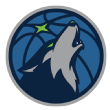
2022-23 record: 42-40
Draft picks in June: No. 53
Free agents: Austin Rivers, Nathan Knight (T), Jaylen Nowell, Naz Reid, Nickeil Alexander-Walker (R), Luka Garza (R) and Matt Ryan (R)
State of the roster: Incomplete and immature. That is the only way to describe a roster that went all in with the Rudy Gobert trade, only to see Karl-Anthony Towns miss 52 games and then swap out D'Angelo Russell for Mike Conley at the trade deadline. In the 529 minutes Gobert and Towns shared the court, Minnesota had an offensive efficiency of 106.2, worse than the last place Charlotte Hornets. The immaturity part stems from Gobert being suspended for punching teammate Kyle Anderson, Jaden McDaniels' self-inflicted hand injury and a team that struggled handling in-game success. Including the play-in loss to the Los Angeles Lakers and the Game 5 loss to Denver, Minnesota squandered 20 double-digit leads this season. However, the Timberwolves are married to this roster. The only place to improve -- outside of developing chemistry -- is tweaking their bench. Minnesota could explore options to break up its core and build around Anthony Edwards. However, Towns has failed to play 50 games or more in three out of the past four seasons (he played 74 games last season, earning All-NBA) and his $224 million supermax extension does not kick in until next season. Gobert has three years and $131 million left on his contract.
Offseason finances: The addition of Conley at the trade deadline has Minnesota committed to $144 million in salary, $18 million below the luxury tax. Conley, Taurean Prince and Jordan McLaughlin all have partially or non-guaranteed contracts, but the Timberwolves would not gain cap flexibility by waiving them. Conley's contract is guaranteed for $14.3 million and becomes fully guaranteed for $23.3 million June 24. Prince's $7.5 million salary becomes fully guaranteed June 28, and McLaughlin's $2.3 million contract becomes fully guaranteed June 30.
Top front-office priority: Expect an extension for Edwards to be a priority. The All-Star is eligible to sign a five-year, $207 million extension that could increase to $249 million if All-NBA language is included. In the games without Towns, Edwards averaged 25.5 points and shot 38% from 3. He ranked in the top 10 in total points off drives per Second Spectrum. A rookie max extension for Edwards would make the Timberwolves the only team in 2024-25 with three players on a max deal.
Extension candidate to watch: If Edwards is priority one, then McDaniels is next in the line. The forward was one of the league's elite defenders this season and will likely see his name on one of the All-Defensive teams. McDaniels ranked in the top 10 in both field goal percentage allowed as the closest defender and field goal percentage allowed at the rim per Second Spectrum. The forward is certainly worthy of a new contract, but how much stock does the front office put into his season-ending hand injury? New contracts for Edwards and McDaniels this offseason, combined with the existing deals for Towns and Gobert could see Minnesota enter the 2024 offseason with more than $140 million committed to four players.
Other extension candidates: Reid (through June 30), Nowell (through June 30), McLaughlin (as of Sept. 5) and Gobert (as of Sept. 30)
Team needs: A bigger budget. This comes down to how much ownership is willing to commit in keeping their own free agents, primarily Reid and Nowell. The Timberwolves enter the offseason only $18 million below the tax and have the non-taxpayer million midlevel exception available if both players leave. Before breaking his left wrist, Reid was averaging a career-high 11.5 points and 4.9 rebounds in only 18.4 minutes. Nowell averaged 11 points in games that he played more than 10 minutes. In two starts this season, he averaged 23.5 points, shooting 59% from the field and 44% on 3s. Both players are unrestricted free agents but eligible to sign a four-year, $58 million extension before June 30.
Future draft assets: Depleted. Minnesota will send Utah unprotected first-round picks in 2023, 2025 and 2027. The Timberwolves will also send a 2029 top-5 protected first. The Jazz have the right to swap firsts in 2026. The Timberwolves have five second-round picks available to trade. Currently, the Timberwolves are not allowed to trade a future first in any season.
Brooklyn Nets

2022-23 record: 45-37
Draft picks in June: Nos. 21 (via PHX), 22, 51
Free agents: Seth Curry, Cameron Johnson (R), Yuta Watanabe, David Duke Jr. (R) and Dru Smith (R)
State of the roster: After years of roster turmoil, there is finally stability in Brooklyn. However, the days of competing for a championship are over for now. If you need proof, just look at the Nets' record after trading Kevin Durant to the Phoenix Suns: 13-15 in the regular season, 4-7 in clutch-time games (they were outscored by 34 points in the clutch, second worst in the NBA) and a first-round sweep at the hands of the Philadelphia 76ers. The current version of the Nets resembles the 2018-19 before the arrival of Durant and Kyrie Irving. That team won 42 games, finished sixth in the East and also lost to the 76ers in the first round. The difference, however, is that going into this offseason, Brooklyn does not have cap flexibility to reshape its roster nor does it have control of its own first-round picks over the next four seasons. What the Nets do have is a foundational player in Mikal Bridges, two first-round picks in June, restricted free agent Cameron Johnson and eight players entering the last year of their contract, including starters Spencer Dinwiddie and Nic Claxton. The future of Ben Simmons remains unknown. The former All-Star is owed $78 million over the next two seasons and has played a total of 42 games the past two seasons.
Offseason finances: Given that they just traded two superstars, the Nets would seem to be clear of the luxury tax and get out of repeater status. However, that is not the case. Brooklyn enters the offseason only $10 million below the $162 million tax threshold and will likely end up a tax team after giving a new contract to Johnson, barring a trade of another player on the roster. If Johnson's contract starts with a $20 million salary for 2023-24, Brooklyn would need to move at least $15 million in salary to avoid the tax. If the Nets don't, they'll be over the tax and the new "first apron" in the collective bargaining agreement that starts in July. The good news is that the Nets have five players earning between $6.8 and $20 million on expiring contracts, including the $9.5 million partially guaranteed salary of Royce O'Neale. The O'Neale contract becomes guaranteed on July 10. There is also a June 5 guarantee on the $2.2 million contract of Edmond Sumner. The Nets have a $18.1 million trade exception, the largest in the NBA, and can take back salary before June 30 and not have it impact their tax penalty for 2022-23. The exception expires next February.
Top front-office priority: Getting a healthy and playable Simmons continues to be the main priority for a second consecutive offseason. The next is retaining Johnson, who averaged 16.6 points with Brooklyn, up from the 13.9 he was averaging in Phoenix. In his time with Brooklyn, Johnson had to create more for himself. According to Second Spectrum, 56.8% of his shots came directly off a pass with the Nets. Last season with the Suns, that percentage was 77.4%.
Extension candidate to watch: Spencer Dinwiddie, who was acquired from Dallas in the Irving trade, becomes eligible to sign a four-year, $128 million extension starting on Aug. 7. In 26 games with Brooklyn this season, Dinwiddie averaged 9.1 assists, trailing only Atlanta Hawks guard Trae Young in assists in that span. However, Brooklyn was outscored by 21 points in clutch time when Dinwiddie was on the court. Also, among the 100 players who took at least 100 3-point attempts from Feb. 9 through the end of the season, Dinwiddie ranked 96th in 3-point field percentage (28.9%).
Other extension candidates: Seth Curry (through June 30), Royce O'Neale, Joe Harris and Ben Simmons
Team needs: Shooting and rebounding. The Nets went from second in 3-point percentage before the Durant trade to 18th. They ranked in the bottom half of the league in both catch-and-shoot and off-the-dribble 3-point percentage. Brooklyn ranked 29th in offensive rebounding percentage and 28th in second-chance points.
Draft assets: Let's first start with what Brooklyn has. In addition to the two first-round picks in June (the Nets also have a second), they own three unprotected firsts from Phoenix (2025, 2027, 2029), a future first from Philadelphia (it is top-8 protected in both 2027 and 2028) and a 2029 unprotected first from the Mavericks. They also have the right to swap firsts with Phoenix or Philadelphia in 2028. What they don't have is control over their own firsts in the next four years. Brooklyn still owes the Houston Rockets unprotected first-round picks in 2024 and 2026, and the Rockets have the right to swap firsts with the Nets in 2025 and 2027.

ELIMINATED IN PLAY-IN TOURNAMENT
Oklahoma City Thunder
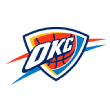
2022-23 record: 40-42
Draft picks in June: Nos. 12, 37 (via WAS), 50 (via MIA)
Free agents: Dario Saric, Lindy Waters III (T), Jared Butler (R) and Olivier Sarr (R)
State of the roster: Before the start of training camp, general manager Sam Presti gave his viewpoint on the upcoming season.
"We just want long-term overall improvement," he said. "That doesn't mean every season is going to be the same way. There's going to be a lag or where sometimes things go faster. Progress is dictated by where you start and where you finish."
The Thunder started as the second-youngest team in NBA history and one that was projected to win no more than 27 games. They finished with 14 more wins than 2021-22 and saw significant growth within their roster. The offseason presents another opportunity for this team to take that next step internally. It starts with the draft, where the Thunder have another lottery pick. Oklahoma City showed an aggressiveness last June to package assets to improve the roster. The Thunder traded three protected first-round picks to New York for the 11th pick in the draft (the rights to Ousmane Dieng). The roster returns 14 players, including Shai Gilgeous-Alexander, Jalen Williams, Josh Giddey, Luguentz Dort and last year's No. 2 pick, Chet Holmgren, who missed the entire 2022-23 season with a foot injury. Out of the group of 14 players under contract, seven are on rookie first-round contracts, and no player outside of Gilgeous-Alexander is set to earn more than $20 million. As a result, Oklahoma City could enter the offseason with close to $30 million in cap space.
Offseason finances: The Thunder have two paths to choose from this offseason. The first is to play the cap space game. Including their first-round pick and $7.6 million in non-guaranteed salary (Isaiah Joe, Aaron Wiggins, Lindy Waters III and Jeremiah Robinson-Earl), the Thunder are projected to have $30.5 million in room. Oklahoma City also could choose the option to remain over the cap. Staying over would see the Thunder retain their four trade exceptions ($4.3 million, $4.2 million, $3.5 million and $943,000), along with their $12.3 million midlevel and $4.5 million biannual exception. The Thunder took the over-the-cap approach in 2021-22 despite having just $78.8 million in guaranteed salary ($33.5 million below the cap) before free agency began. The difference, however, is that Oklahoma City had two large trade exceptions of $12.1 million and $9.5 million to take up the cap space.
Top front-office priority: Patience. Like any young team that tastes success, the question always turns to what is next. The answer in Oklahoma City is to stick with the principles that have led to building a sustainable roster. The Thunder could have around $30 million in cap space, and there is always the temptation to add outside of their own players. They also have a treasure chest of draft assets and young players to target an All-Star who might be made available. However, the timeline is different from 2017 when they acquired All-Star Paul George in a blockbuster trade. The Thunder are still very much in the middle stages of development and analyzing their own roster. Until there is a more body of work to see who fits, Oklahoma City should be in a holding pattern..
Extension candidate to watch: The Thunder have three players -- Saric, Aleksej Pokusevski and Robinson-Earl -- eligible to sign an extension. Before injuring his left leg in December, Pokusevski was averaging 8.8 points and 4.7 rebounds in 20.6 minutes.
Team needs: Besides another year of development and a healthy Holmgren, shooting is needed. The Thunder are at their best when Gilgeous-Alexander is driving to the basket. The guard is one of two players averaging five-plus assists opportunities on kickout passes leading to a 3. Despite Joe ranking in the top 10 in catch-and-shoot 3s, Oklahoma City still managed to shoot only 36%.
Future draft assets: The Thunder have 27 future draft picks at their disposal -- 14 firsts and 13 seconds.
Below is the first-round breakdown:
All six of their own
Two unprotected from LA Clippers (2024 and 2026)
Two top-four protected from Houston (2024 and 2026)
Top-10 protected from Utah (2024, top-10 protected in 2025, top-eight in 2026)
Top-14 protected from Miami (2025, unprotected in 2026)
Top-six protected from Philadelphia (2025, top-four protected in 2026 and 2027)
Top-five protected from Denver (2027, 2028 and 2029)
Swap rights: Clippers (2023 and 2025)
Swap rights: Houston (2025, top-10 protected)
Chicago Bulls
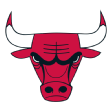
2022-23 record: 40-42
Draft picks in June: None
Note: The Bulls retain their first if it falls in the top four. There is a 93% chance the pick is conveyed to Orlando.
Odds for the No. 1 pick: 1.7%
Free agents: Nikola Vucevic, Ayo Dosunmu (R), Andre Drummond (P), Javonte Green, Derrick Jones Jr. (P), Coby White (R), Patrick Beverley and Terry Taylor (R)
State of the roster: Despite losing in the play-in this year and first round last year, Chicago's outlook is not doom and gloom. The Bulls went 14-9 after the All-Star break, ranking first in defensive efficiency (it finished fifth for the entire season). After Beverley joined the team, the Bulls outscored opponents by 69 points when Beverley, Alex Caruso, Zach LaVine, DeMar DeRozan and Vucevic shared the floor. Was the 23-game sample enough to keep this roster intact? And if not, should Chicago pivot away from its core players, Vucevic, LaVine and DeRozan? LaVine has four years and $178 million remaining on his contract, and DeRozan is a free agent in 2024. Vucevic is part of a group of eight free agents that includes guards Beverley, White and Dosunmu.
Offseason finances: Vucevic's $33 million free agent hold has the Bulls over the $134 million cap despite only $118 million in guaranteed contracts. If Vucevic does not return, the Bulls will likely be over the cap because of their other committed free agent holds (White and Dosunmu) and exceptions. The Bulls could create cap flexibility but only if their own free agents are not retained and they petition the NBA for salary relief on the remaining $43 million owed to Lonzo Ball. The NBA would then have to determine if Ball's knee injury is career ending.
Top front-office priority: The first priority is for the front office and coaching staff to analyze their close games and come up with a plan moving forward. The Bulls were 15-23 in clutch-time games (25-16 last season) and 7-14 in games decided by five points or fewer. LaVine shot 6-33 (18.2%) on 3-pointers in clutch time. That ranked last among 29 players with at least 25 3-point attempts in the final five minutes and the score within five points. The second priority will be Vucevic's free agency. Vucevic, one of the more durable centers, turns 33 in October. He has played three straight seasons of 70-plus games, including 82 this year. His 225 games played ranks eighth among all centers. Vucevic had a career-high 57.6% effective field goal percentage and averaged at least 10 rebounds for a fifth straight season. If Vucevic leaves in free agency, the Bulls' lone resource to replace him would be the midlevel exception. Backup center Andre Drummond has until June 29 to opt in to his $3.4 million contract.
Extension candidate to watch: If the Bulls are all-in with the current roster, then DeRozan becomes a priority for an extension. DeRozan has averaged at least 20 points per game in each of the past 10 seasons. He is eligible to sign up to a four-year, $179 million extension. Patrick Williams is eligible to sign up to a five-year extension. After missing 65 games last season because of a wrist injury, Williams played in all 82 games this year. He averaged a career-high 10.2 points and shot greater than 46.5% from the field for a third consecutive season.
Other extension candidates: Marko Simonovic (as of July 12), Lonzo Ball (as of July 8) and Alex Caruso (as of July 8)
Team needs: Point guard and 3-point shooting. Chicago has the right to match offer sheets with Dosunmu and White, while a portion of its midlevel exception is available to sign Beverley. Chicago ranked last in 3-point attempts this season, the only team to average below 30 per game.
Future draft assets: If the Bulls send Orlando their first this year, they will then send San Antonio a 2025 top-10 protected first. The pick is top-eight protected in 2026, 2027 and 2028 if not conveyed in any of the prior seasons. In the scenario that Chicago retains its first, the Bulls will send Orlando a 2024 top-three protected first. It will turn into second-round picks in 2026 and 2027 if not conveyed. Chicago would then send a 2026 top-10, 2027 top-eight or 2028 top-eight protected first to the Spurs. The Bulls have a 2024 top-14 protected first from the Blazers. The pick is lottery protected until 2028. The earliest Chicago can trade its own first is two years after the conditions to the Spurs have been met. The Bulls can trade the pick owed from Portland at any time. Their lone second-round pick available to trade is in 2029.
New Orleans Pelicans

2022-23 record: 42-40
Draft picks in June: No. 14
Free agents: Herbert Jones (T), Naji Marshall (T), Willy Hernangomez (T), Josh Richardson and Jaxson Hayes (R)
State of the roster: What we learned over the past season is that there are two different teams in New Orleans. There is the team that is a legitimate threat to come out of the Western Conference when Zion Williamson is on the floor. Before Williamson injured his hamstring on Jan. 2, New Orleans ranked No. 8 in offensive efficiency and was 10 games over .500. Then there was the play-in team when Williamson was injured. With Williamson not on the court, New Orleans went 19-27 and ranked No. 26 in offensive efficiency. While the health of Williamson casts a negative light, there are positives moving forward. New Orleans once again will have a lottery pick to keep or use in a trade. Its roster is top-heavy, with 66% of salary committed to Williamson, CJ McCollum and Brandon Ingram, but the front office has a strong track record of drafting and finding undrafted free agents. Over the past two offseasons, the Pelicans have acquired Trey Murphy III, Herbert Jones, Jose Alvarado and Naji Marshall. The four players will earn a combined $9 million next season.
Offseason finances: Year One of Williamson's $194 million extension has New Orleans $1.3 million above the luxury tax when including its lottery pick. To get under the tax, the Pelicans have the option of waiving Garrett Temple and signing a minimum free agent as a replacement. Temple's $5.4 million contract does not become guaranteed until June 30. The Pelicans also have until June 29 to decide on the team options of Jones, Marshall, Willy Hernangomez.
Top front-office priority: Continued buy-in from ownership. New Orleans is facing the luxury tax for the first time in franchise history, and it would be easy for ownership to cut costs on a roster that hasn't finished better than ninth in the Williamson era. However, while their core players of Ingram, McCollum and Williamson have played just 10 games together and shared the floor only 172 minutes, New Orleans outscored their opponents by 60 points in those minutes.
Extension candidate to watch: Half the roster is extension eligible, but the focus is on Jones, who is eligible to sign a four-year, $71 million extension starting on July 16. A former second-round pick, Jones has started 94% of the games he has played since last season, averaging 9.7 points and 3.9 rebounds. Jones ranked in the top 10 in deflections and charges drawn. Per Cleaning the Glass, the former second-rounder ranked in the 98th percentile at his position in steals. The Pelicans were plus-9.6 when he was on the court. He would become a restricted free agent if a new contract is not reached before June 30, 2024.
Other extension candidates: Kira Lewis Jr. (rookie), Marshall through June 30 and next season (if team option is exercised), Temple (as of July 8), Hernangomez (as of July 16), Jonas Valanciunas (as of Oct. 20) and Ingram (as of July 14)
Team needs: Rim protector and shooting. Per Second Spectrum, the Pelicans ranked last in field goal percentage allowed at the rim this season. They ranked second to last in the prior two seasons. There has to be a priority to generate offense from deep. The Pelicans ranked 29th in 3-point attempts this season and 24th in percentage of points from 3-pointers.
Draft assets: The Pelicans have their first in the next six years. They have one second-round pick available to trade. Below is the breakdown of first-round picks acquired in multiple trades.
Unprotected from Lakers (2024 but can defer to 2025)
Unprotected from Milwaukee (2027)
Swap rights: Milwaukee (2024 and 2026)
*Note: The Pelicans also have the Bucks' 2025 first-round pick, but only if it lands in the top four, otherwise it goes to New York.
Toronto Raptors

2022-23 record: 41-41
Draft picks in June: No. 13
Free agents: Fred VanVleet (P), Gary Trent Jr. (P), Jakob Poeltl, Otto Porter Jr. (P), Will Barton, Jeff Dowtin Jr. (R), Ron Harper Jr. (R) and Dalano Banton (R)
State of the roster: Time is up for the Raptors. Unlike the trade deadline, when Toronto kept the current roster intact (it did add Jakob Poeltl), there are now decisions to be made. It started when the team parted ways with head coach Nick Nurse. "To watch us play this year was not us," team president Masai Ujiri said at a news conference. "I did not enjoy watching this team play. I think that spoke loud and clear to everything that went on this year. It bothered all of us." Now there are contractual decisions with their top six players, outside of Scottie Barnes. Fred VanVleet and Gary Trent Jr. have player options and are likely to become free agents in July. They will join Poeltl, who is an unrestricted free agent. Pascal Siakam and O.G. Anunoby are extension eligible and can become free agents in 2024. If Toronto keeps all five players then extends Barnes next offseason, total salaries could exceed $170 million in 2025-26. The lineup of VanVleet, Barnes, Anunoby, Siakam and Poeltl averaged 18.8 minutes together and outscored opponents by 63 points.
Offseason finances: Including the player options of VanVleet, Trent, Otto Porter Jr. and their first-round pick, the Raptors enter the offseason with $150 million committed next year, some $12 million below the tax threshold. VanVleet has until June 15 to opt in to his contract, Porter has until June 20 and Trent has until June 29. If those three players and Poeltl return, Toronto will likely be a tax team in 2023-24. The Raptors do have flexibility with the non-guaranteed contracts of Thaddeus Young ($8 million) and Joe Wieskamp ($1.9 million). Both contracts become guaranteed on June 30. If VanVleet and Trent do not return, the Raptors are still technically at the cap because of the $17.8 million free agent hold of Poeltl.
Top front-office priority: Besides finding a new head coach, it starts with VanVleet. The former All-Star tabled discussions this year on a four-year, $114 million extension that would have paid him a $25.5 million salary in 2023-24. The extension is $10 million less than what Jalen Brunson signed for in New York last season. VanVleet has averaged the second-most minutes in the league over the past three seasons (only behind Siakam) and leads the NBA in miles covered per game over three seasons, per Second Spectrum. Considering that Toronto sent a lightly protected 2024 first-round pick to acquire him, Poeltl is a priority this offseason. His next contract should range from $15 million per season (Jusuf Nurkic) to as high as $20 million (Jarrett Allen).
Extension candidate to watch: The change in extension rules gives Toronto an extra $16 million it can offer Anunoby in a deal. A four-year, $116 million contract would start at $26.1 million and replace his $19.2 million player option in 2024-25. Anunoby averaged 17.3 points on 54.1% from the field and 44.2% on 3s after the All-Star break. Siakam is eligible to sign a four-year, $189.1 million max extension in July. If he earns All-NBA honors this season, he would then become supermax eligible. The extension would increase to five years and an extra $100 million.
Other extension candidates: Poeltl (through June 30), VanVleet (if player option is exercised), Trent (if player option is exercised), Precious Achiuwa (rookie) and Malachi Flynn (rookie)
Team needs: Shooting and the bench. The Raptors ranked 28th in 3-point percentage this season; Trent and Anunoby were the only players to shoot better than 37%. The Toronto bench ranked last in minutes and points per game.
Draft assets: The Raptors will send San Antonio a top-six protected first in 2024, 2025 or 2026. They are allowed to trade their 2023 first starting the night of the draft. The earliest future first they can trade is two years after the conditions to San Antonio have been met. They have two second-round picks available to trade.

ELIMINATED AFTER REGULAR SEASON
Charlotte Hornets
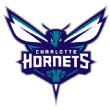
2022-23 record: 27-55
Draft picks in June: Nos. 2, 27 (via DEN), 34, 39 (via UTA), 41 (via OKC)
Free agents: Miles Bridges (R), P.J. Washington (R), Svi Mykhailiuk, Kelly Oubre Jr., Dennis Smith Jr., Theo Maledon (R) and Xavier Sneed (R)
State of the roster: After losing back-to-back play-in games by an average of 28 points, the Hornets ripped off the bandage of mediocrity, though not intentionally. Their second-best player, restricted free agent Miles Bridges, was arrested in late June on felony domestic violence charges (he pled no contest in November and was sentenced to three years of probation). All-Star LaMelo Ball played a career-low 36 games and saw his season end early because of a broken right foot. The roster missed the sixth-most games because of injury (per Spotrac), culminating in the worst winning percentage in franchise history since the then-Bobcats went 7-59 in 2011-12. The roster improvement starts with the June draft, where Charlotte has five selections (including a 12.5% chance to get the No. 1 pick). They'll also need clarity with their free agents, particularly Bridges and P.J. Washington. A question entering the offseason also revolves around who is in charge. As Adrian Wojnarowski reported, Charlotte owner Michael Jordan is in talks to sell a majority stake in the franchise. A change in ownership and also philosophy could alter the offseason budget.
Offseason finances: The Hornets have $91 million in guaranteed contracts entering the offseason, but because of the free agent holds for Bridges, Washington and their two first-round picks, they are over the cap. In the event that Bridges does not return, Charlotte could have up to $18 million in room. The last time the Hornets used cap space was in 2021 when they signed Gordon Hayward to a four-year, $120 million contract. Since taking over in 2018, the only free agents with NBA experience whom general manager Mitch Kupchak has signed are Hayward and Dennis Smith Jr. If Bridges and Washington do return, Charlotte likely has the flexibility to remain below the luxury tax and have access to the midlevel and biannual exceptions.
Top front-office priority: A change in ownership could dictate the futures of restricted free agents Bridges and Washington. Despite not playing this season, Bridges is still a restricted free agent if the Hornets tender him a $7.7 million qualifying offer before June 29. The forward was suspended for 30 games (20 of those games were credited as time served for missing the 2022-23 season) and will have to sit out the start of the season if he re-signs. Bridges averaged 21.2 points on 52% shooting and 40% from 3 after the All-Star break in 2021-22, and nobody is questioning his talent on the court. However, he has not played in a full season and pleaded no contest to felony domestic violence, which raises the question of whether a lucrative contract is deserved. Washington was the most durable player on the roster this season, missing only four games because of a foot injury in February. He averaged career highs in points (15.7) and minutes (32.7).
Extension candidate to watch: Ball is eligible for a five-year, $204 million rookie max extension but has played only 162 games in three seasons. If the conversation is focused on the impact Ball has on the court during the regular season while also taking into account his upside, he is worth it. He averaged a career-high 23.3 points and 8.4 assists per game this season. The Hornets were 13-23 with Ball on the court this season and 14-32 with him inactive. However, Ball has played in zero playoff games -- neither had Zion Williamson before signing his max extension -- was ineffective in Charlotte's two play-in losses and has proved to be less than durable. Speaking of Williamson, Charlotte could take the same approach as New Orleans did and include a games-played clause that reduces the guaranteed amount and protects the organization.
Other extension candidates: Hayward and JT Thor
Team needs: Besides health, the bench is a priority. The Hornets reserves averaged 29.4 points, fourth fewest in the NBA, and ranked last in 3-point field percentage.
Future draft assets: The Hornets will send San Antonio their own top-14 protected first in 2024 (it conveys in 2025 if not sent). They also have only four future second-round picks available.
Dallas Mavericks
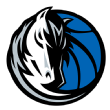
2022-23 record: 38-44
Draft picks in June: No. 10
Odds for the No. 1 pick: 3%
Note: There is a 19% chance that the pick drops to No. 11 and 1.2% to No. 12 after the lottery. If that occurs, Dallas will send its first-round pick to New York.
Free agents: Kyrie Irving, Christian Wood, Frank Ntilikina, Markieff Morris, Justin Holiday, Theo Pinson, Dwight Powell and McKinley Wright IV (R)
State of the roster: Dallas went from conference finalist to counting ping-pong balls. Including All-Star Luka Doncic, Dallas has eight players under contract, and the focus will be on what to do with their own free agents, starting with Irving. The goal for the Mavericks is to fix a defense that ranked 23rd in defensive efficiency before the Irving trade and 26th after. However, the Mavericks have few options to improve the roster. They have their own first-round pick but only if it falls in the top-10 (the pick is conveyed to New York if it does not). Retaining the pick would give Dallas a young player to develop or to use in a trade (Dallas can trade the player it drafts once the pick is made).
Offseason finances: If Irving returns, the Mavericks will be over the salary cap and will have only veteran minimums and the midlevel exception available. They could explore trades with their own players under contract (Tim Hardaway Jr., Maxi Kleber, Davis Bertans). However, if the draft conditions to New York are not met, the earliest Dallas can trade a first is in 2027. They also have no second-round picks available. The Mavericks could create between $20 million and $30 million in cap space, but that would come at the expense of Irving, Wood, Powell and likely Reggie Bullock, whose $10.5 million contract becomes guaranteed June 28. There is also the sign-and-trade option with their own free agents that Dallas could also explore. The Mavericks would not be hard-capped in a sign-and-trade deal because they would be acquiring players (but not free agents) in a deal.
Top front-office priority: Irving is eligible to sign a five-year, $272 million contract, and while there is no doubt that he is a max player, there should be some concern over the length of a new deal. Irving has played fewer than 65 games in four straight seasons and considering that Doncic could become a free agent in 2026, the Mavericks should not commit more than three seasons. There is also the question on who Dallas is bidding against. The Lakers are likely not to have cap space and the teams that do -- Indiana, San Antonio, Houston, Orlando -- either have their point guard of the future or are in the middle stages of rebuilding. Irving could take less money elsewhere or a team that is currently over the cap could create flexibility. That would lead to a big decision for Dallas: Can the Mavericks afford to lose Jalen Brunson and Irving in consecutive offseasons for nothing?
Extension candidate to watch: Josh Green could join Doncic as the only Mavericks to receive a rookie extension since 2008. When he has played at least 15 minutes, Green averaged 9.4 points on 53% shooting and 40% on 3s. Dallas also has until June 30 to extend Christian Wood. The trio of Wood, Doncic and Irving have struggled this season. In 14 games and 45 minutes together, the Mavericks have a minus-38.2 net efficiency when all 3 are on the floor (99.0 offensive efficiency and 137.2 defensive efficiency).
Other extension candidates: Irving (through June 30), Powell (through June 30), Bullock, Bertans and Hardaway (as of July 9)
Team needs: It is all about fixing their interior defense. Since Feb. 11, the Mavericks rank 29th in field goal percentage allowed on layups and dunks and 28th in shot quality on these field goal attempts. Per Second Spectrum tracking, Dallas has been blown-by on 27.5% of drives defended since Feb. 11, the fifth-highest rate allowed.
Future draft assets: If the Mavericks retain their own 2023 first-round pick, they will then send New York a top-10-protected first in 2024 or 2025. If the first is not conveyed in either season, Dallas will send New York a 2025 second-round pick. Dallas also owes Brooklyn a 2029 unprotected first. The only first they can trade is in 2027. They have no second-round picks available to trade.
Detroit Pistons
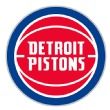
2022-23 record: 17-65
Draft picks in June: Nos. 5, 31
Free agents: Alec Burks (T), Hamidou Diallo, Cory Joseph, Isaiah Livers (T), Rodney McGruder, Eugene Omoruyi (T), Buddy Boeheim (R) and Jared Rhoden
State of the roster: The Pistons have won 20, 23 and 17 games in the past three seasons. This season's low win total -- the second lowest in franchise history -- came in part because 2021 No. 1 pick Cade Cunningham played only 12 games. As a result, Detroit was forced to use 29 different starting lineups and focused on developing its young players, primarily 2022 lottery picks Jaden Ivey and Jalen Duren. As general manager Troy Weaver stated last season, the goal is to build a sustainable roster.
"I'm sure everyone would like us to fast-track it, but you only have one shot at this thing," he said. "We'll continue to follow the blueprint and we feel very confident we'll come out on the other side of this thing the right way."
The offseason starts with a search for the next head who continues to emphasize player development but also builds a culture of winning. Detroit once again has cap flexibility and will add the 5th pick to a roster that already includes Cunningham, Ivey, Duren, James Wiseman and Isaiah Stewart. Veterans Bojan Bogdanovic and Alec Burks are coming off career seasons as well, and Detroit could elect to keep them or move them in a trade.
Offseason finances: The Pistons enter the offseason with a minimum of $30 million (including their lottery pick) in cap space. The near-max slot could increase to $40 million in the unlikely scenario they decline Burks' $10.5 million team option. How Detroit maximizes its spending power is dependent on which playbook from the past three offseasons Weaver follows. In his first season, Detroit signed starters Jerami Grant and Mason Plumlee to lucrative contracts. In 2021, the Pistons broke up their space to sign role players Trey Lyles, Kelly Olynyk, Hamidou Diallo, Frank Jackson and Cory Joseph. This past July, the Pistons used $20 million of their flexibility to acquire the contracts of Burks, Nerlens Noel and two second-round picks from New York.
Top front-office priority: Besides the coaching search, the night of the draft lottery should set in motion how the Pistons construct their roster this offseason. Would the overload of bigs (Stewart, Marvin Bagley III and perhaps Wiseman) become expendable if Detroit gets the No. 1 pick? What might happen to former lottery pick Killian Hayes (Scoot Henderson) or even Bogdanovic (Brandon Miller and Amen Thompson)? That leads to the next question: Is this roster good enough to compete for a play-in spot with a healthy Cunningham, another year of development and a lottery pick? And if not, is Detroit open for business in free agency or the trade market?
Extension candidate to watch: There were valid questions when the Pistons acquired Wiseman from the Warriors. Why would Detroit swap a young wing in Saddiq Bey for a center in Wiseman, especially with Duren, Stewart and Bagley on the roster? Wiseman also had durability concerns, having played just 63 games since 2019. But the two-month audition has paid off, at least in the short term. Wiseman has eight double-doubles, averaging a career high 12.8 points and 7.9 rebounds. But does this small sample warrant a new contract? Unlikely, unless Detroit and Wiseman agree to a team-friendly contract that is incentivized with games played.
Other extension candidates: Hayes, Stewart, Livers and Burks
Team needs: Let's start with a healthy Cunningham. The point guard is an impact player when he's on the court. In the second half of his rookie season, Cunningham became the sixth rookie since 1976-77 to average 21.1 points, 5.7 rebounds and 6.5 assists.
Future draft assets: The Pistons owe New York a first that has protection in the next four years (top-18 in 2024, top-13 in 2025, top-11 in 2026 and top-nine in 2027). The Pistons have seven future second-round picks available.
Houston Rockets
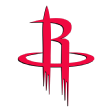
2022-23 record: 22-60
Draft picks in June: Nos. 4, 20 (via LAC)
Free agents: Kenyon Martin Jr. (T), D.J. Augustin, Boban Marjanovic, Darius Days (R), Trevor Hudgins, Willie Cauley-Stein and Frank Kaminsky
State of the roster: The third-youngest roster in the NBA is at the crossroads of a rebuild that started in 2021. The Rockets have two picks in the top 20 and could create close to $60 million in cap space to bring in free agents. But the reality is that since trading James Harden to Brooklyn, the Rockets have finished with 14, 20 and 21 wins in the past three seasons. The question facing the Rockets' front office is whether there is a middle ground to improve the roster in free agency (or also in trades) while retaining future flexibility and not compromising the development of their young core? The answer to that question starts with the hiring of Ime Udoka as the next head coach. Udoka led the Celtics to the NBA Finals in his lone season as coach in 2021-22. Including the two first-round picks in June, the Rockets have 13 players under contract, so Houston might need to start taking a quality-over-quantity approach.
Offseason finances: Houston enters the offseason with the most cap space, close to $60 million. The projected room includes Martin's $1.9 million team option and Daishen Nix's $1.8 million non-guaranteed contract. The deadline to make a decision on both players is June 29. The Rockets have seven players on first-round contracts, and only Kevin Porter Jr. ($15.7M) has a salary higher than $10 million in 2023-24.
Top front-office priority: Addressing the backcourt. The root of the Rockets stagnated development starts with the pairing of Porter and Jalen Green. In the 1,700 minutes the two have played together, Houston has been outscored by 7.5 points per 100 possessions. The Rockets have a 110.9 offensive rating when both players are on the court, slightly above the team's overall offensive efficiency, which ranks 27th. Porter is set to enter the first year of a four-year, $73 million extension signed in October, but only the first year of the contract is guaranteed.
Extension candidate to watch: Martin has outplayed the four-year, $6.1 million contract that he signed in 2020. The 2020 second-round pick averaged a career high 12.3 points and 5.6 rebounds in 27.4 minutes while not missing a game this season. He is currently eligible to sign a four-year, $58 million extension through June 30, but that would cut significantly into Houston's cap space this summer. The Rockets could also decline the $1.9 million team option, allowing Martin to become a restricted free agent. After having the option declined, Martin would have a $5.2 million cap hold, and Houston could use its cap space in free agency before circling back to sign the forward. Houston could also pick up the option, which would make Martin an unrestricted free agent in 2024. Both sides would have until next June to negotiate an extension.
Team needs: A playmaker and veteran bench depth. The Rockets ranked last in points allowed off turnovers for a second consecutive season. The carelessness with the basketball resulted in a league high 17.2 fast-break points allowed. Per Second Spectrum, Houston also ranked last in points per possession allowed in transition and points per possession following a live ball turnover.
Future draft assets: Houston has two unprotected firsts from Brooklyn in 2024 and 2026, and the right to swap firsts with the Nets in 2025 and 2027. Houston also has eight future second-round picks available. However, Houston still owes picks to Oklahoma City because of the ill-fated Russell Westbrook trade. The Rockets will send Oklahoma City top-four-protected first-round picks in 2024 and 2026 (those become second-round picks if they do not convey). The Thunder also have swap rights with the Rockets (top-10 protected) in 2025.
Indiana Pacers
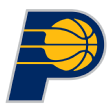
2022-23 record: 35-47
Draft picks in June: Nos. 7, 26 (via CLE), 29 (via BOS), , 32 (via HOU), 55 (via CLE)
Free agents: Oshae Brissett, George Hill, James Johnson, Kendall Brown(R) and Gabe York(R)
State of the roster: Do not let 35 wins and missing the playoffs for a third consecutive season fool you. The future in Indiana is stable. The Pacers check the boxes on how to retool a roster without bottoming out in the standings. Let's start with the draft, where the Pacers have four selections in the top 32 and have a 6.8% chance of landing the number one pick for the first time in franchise history. The deepest roster in the NBA (Indiana led the league in bench scoring with 43.8 PPG) returns 12 players including All-Star Tyrese Haliburton, who became the first player in NBA history to average 20 points and 10 assists and shoot 40% on 3-pointers in a single season. Haliburton's impact is best defined by the stretch of games he missed after he was injured on Jan. 11. Before his left knee injury, Indiana was five games over .500 and ranked 14th in offensive efficiency. In the 11 games he missed, Indiana was 1-10 and ranked 27th in efficiency. Last year's lottery pick, Bennedict Mathurin, finished the season averaging 16.7 points and became the first rookie to score 1,000 points off the bench since Ben Gordon in 2004-05. The Pacers have a clean cap ledger with Myles Turner and Buddy Hield as the only two players earning more than $19 million. Turner finished 5th in blocks and Hield ninth in 3-point percentage. The two have value on the court and in potential trades. And then there is the Pacers depth.
Offseason finances: Even after renegotiating and extending Turner's contract, the Pacers project to have $25 million in cap space.
Top front-office priority: The direction Indiana takes with their four picks in June is priority one. Do the Pacers take a quality over quantity approach with their two late firsts and look to move up? The next priority will be balancing the roster. Although rosters can expand to 20 in the offseason, the Pacers will have 15 players (the regular-season limit) under contract if they keep all three firsts. Twelve out of the 15 players on the roster have been acquired either in the draft or trade and the Pacers do not have a history of spending in free agency. And finally, can Mathurin develop into a reliable No. 2 next to Haliburton? Mathurin will be entering his second season and started only 10 games as a rookie. Since the beginning of February, Mathurin has averaged 12.7 points on 45% shooting, including 29% on 3-pointers. That scoring average is down from 17.9 points from October to January. For the entire season, Mathurin shot 32.7% on jump shots, which ranks in the bottom-10 among 135 players to attempt 300 jumpers per Second Spectrum tracking. That percentage has been just 28.6% since Feb. 1.
Extension candidate to watch: Haliburton is likely to join an elite company this offseason. Not since 2013, when Indiana signed Paul George, has a Pacer player signed a Designated Rookie Veteran extension. Haliburton is eligible to sign a five-year, $204 million contract, the largest in franchise history. The lone negotiation should be if there is All-NBA language and a player option. If Haliburton earned All-NBA in the 2023-24 season, the contract would increase from $204 to $245 million. Since the 2021 offseason, seven players have signed rookie max extensions with two players, Luka Doncic and Trae Young, having a player option. All seven players also had a variation of All-NBA escalator language in their contracts.
Other extension candidates: Aaron Nesmith (rookie), McConnell, Hield and Daniel Theis
Team needs: The power forward spot this season has been by committee. The Pacers have started seven different players this season, tied for the most in the NBA. The committee of seven ranked 24th in points (11.2) and 28th in field-goal percentage (43%).
Future draft assets: The Pacers are one of a handful of teams that control their own firsts in the next seven years. They have six second-round picks in the future.
Orlando Magic
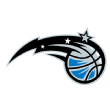
2022-23 record: 34-48
Draft picks in June: Nos. 6, 11 (via CHI), 36
Note: The Magic will receive the Bulls' first-round pick if it falls outside of the top four.
Odds for the No. 1 pick: 9%
Free agents: Moritz Wagner, Goga Bitadze (T), Michael Carter-Williams (T) and Admiral Schofield (T)
State of the roster: No Eastern Conference lottery team is set up better for the future than Orlando. The Magic improved their win total from 22 to 34 and have the roster resources to take another jump starting with the draft. For a second time in three years, Orlando has two lottery picks (the Bulls retain their first if it jumps into the top four) and have a 9% chance of selecting first. The NBA's second-youngest roster -- led by likely Rookie of the Year winner Paolo Banchero, Franz Wagner and Wendell Carter Jr. -- has a sustainable foundation in place. Banchero averaged 20.0 points this season, the most by a rookie since Luka Doncic in 2018-19. He and Wagner are the third pair of teammates 21 or younger to average 18 points in a season. Carter averaged a career high 15.2 points and posted his fourth straight season of at least 8 rebounds per game. The Magic also have roster flexibility with 14 players under contract but only seven on guaranteed deals.
Offseason finances: The Magic once again have the option to be a cap space team or act as a team over. They have $60 million in guaranteed contracts and can spend in free agency or bring back a majority of the roster plus two potential lottery picks. To create up to $30 million in cap space, Orlando could release Gary Harris, Goga Bitadze, Michael-Carter Williams and Admiral Schofield. Harris' $13 million contract becomes guaranteed on June 30. Bitadze, Carter-Williams and Schofield all have a June 29 team option. The cap space option does not require Orlando to waive the partially guaranteed contracts of Markelle Fultz and Jonathan Isaac. Fultz's contract and Bol Bol's become guaranteed on June 30. Isaac's $17.4 million contract is partially protected for $7.6 million.
Top front-office priority: The draft is priority one, and there will be more clarity the night of the lottery on whether the Magic have one or two firsts, or are they selecting first for a second consecutive season. The second priority is determining if Orlando will use free agency to upgrade the shooting guard position or take a conservative approach, retaining future flexibility. Banchero, Carter, Jalen Suggs and Franz Wagner are the only players on guaranteed contracts in 2024-25. Last offseason the Magic had the option to create room but elected to retain their own free agents, Harris, Bol Bol and Mo Bamba. The last time Orlando had cap space was in 2017, the first year under president of basketball operations Jeff Weltman.
Extension candidate to watch: Fultz and Cole Anthony. The question is how much the Magic value cap flexibility in the 2024 offseason. Fultz has not missed a game since Nov. 30 and averaged career highs in points, assists and field goal percentage. Anthony averaged 16 points and shot 40% on 3-pointers after March 1. Other extension candidates: Jonathan Isaac (as of 9/30) and Chuma Okeke (rookie).
Team needs: Wing depth and another year of Banchero's development. Gary Harris shot 43.1% from 3 this season and has value not only on the court but in the locker room. However, Harris is on an expiring contract, and the Magic's depth consists of Caleb Houstan, Kevon Harris and Admiral Schofield. Since the beginning of February, Banchero shot 19.4% on 3-pointers, the second worst among players with at least 50 attempts.
Future draft assets: The Magic have their own first in the next seven years. If the 2023 first from Chicago is not conveyed, Orlando would then receive a 2024 top-three protected first. They also have a top-five protected first in 2025 or 2026 from Denver. Orlando has 12 future seconds available.
Portland Trail Blazers
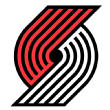
2022-23 record: 33-49
Draft picks in June: Nos. 3, 23 (via NY), 43/44 (via ATL)
Free agents: Jerami Grant, Matisse Thybulle (R), Cam Reddish (R), Kevin Knox II (T), Drew Eubanks, Justise Winslow, Ibou Badji (R), John Butler Jr. (R), Justin Minaya and Skylar Mays
State of the roster: Let's start with the positives. Portland saw its win total from a year ago increase from 27 to 33. Damian Lillard continues to play at an All-NBA level. Lillard's backcourt partner Anfernee Simons averaged a career high 21 points. Jerami Grant was one of eight players to average at least 20 points and shoot 40% on 3-pointers before the All-Star break. Nineteen-year-old Shaedon Sharpe has the upside to be a cornerstone player. In the final ten games of the season, Sharpe averaged 22.9 points. The Trail Blazers have two first-round picks in June, including a 7.5% chance of selecting No. 1.
Now for the concerns.
After starting the campaign 10-4, Portland finished the season 23-45. The 33 wins were Portland's second fewest in the Lillard era. The Blazers' defense continues to rank in the bottom five. Portland already has $86 million committed to Lillard, Simons and Jusuf Nurkic next season. The Trail Blazers means of adding to the roster consists of re-signing their own free agents and their three draft picks. Landing the top pick in the draft would drastically change their outlook and open up more flexibility on how the Blazers can improve. The hard question the Trail Blazers front office now has to ask is if the current roster fits the timeline of Damian Lillard? And if not, does a player like Simons or even Sharpe become expandable? Last offseason the Trail Blazers were willing to acquire a veteran in Grant, but at the cost of a future first, not a player.
Offseason finances: $43 million. That is number Portland will have an eye on this offseason if the Blazers wish to stay below the luxury tax and still re-sign Grant, Reddish and Thybulle. Portland has $121.6 million in salary committed, including the $6.5 million for Knox, Jabari Walker and Trendon Watford and the two first-round picks. The Trail Blazers have until June 29 to exercise the $3 million team option on Knox and June 30 to guarantee Watford's $1.8 million contract. As of now, $400K of Walker's $1.7 million contract is guaranteed, and that increases to a full guarantee if he is not waived by July 20.
Top front-office priority: It starts with the defense. How does Portland expect to compete for a top-six playoff spot and even a championship if it continues to rank in the bottom defensively? Portland has ranked in the bottom-five in defensive efficiency in each of the past four seasons. The Blazers ranked last after the trade deadline even after the addition of Thybulle, a two-time all-defensive team selection.
Extension candidate to watch: June 30 is the last day Grant can sign a four-year, $113 million extension before becoming a free agent. Grant averaged 18.8 points on 38% shooting from 3 after the All-Star break. He has seen his percentage drop significantly from 62% on layups and dunks prior to All-Star break to 49% in the past two months per Second Spectrum. The first year of Grant's extension would be $25 million, and there are six teams projected to have more cap space than that this summer. Portland would not have any cap space even if it loses Grant.
Team needs: Besides improvements defensively, a prime focus is addressing the bench. The Trail Blazers ranked last in points per game from their reserves this season. A big reason is the heavy burden on their starting lineup. The bench played the second-fewest minutes per game this season, ahead of only the Toronto Raptors.
Future draft assets: Because they failed to make the playoffs, Portland will continue to owe Chicago a top-14 protected first starting in 2024. The pick is lottery protected in the next three seasons (2025, 2026, 2027) if not conveyed in any prior year. The Trail Blazers are allowed to trade their 2023 lottery pick the night of the draft. There are no restrictions when the first they are owed from New York can be traded. Portland has four future seconds available.
San Antonio Spurs
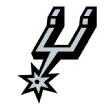
2022-23 record: 22-60
Draft picks in June: Nos. 1, 33, 44 (via TOR)
Free agents: Tre Jones (R), Keita Bates-Diop, Romeo Langford (R), Sandro Mamukelashvili (R), Gorgui Dieng, Dominick Barlow (R) and Julian Champagnie (R)
State of the roster: There are only two words to describe the state of the roster, Victor Wembanyama. The Spurs have their next franchise player and a rebuild that started in 2021 is likely to accelerate. Wembanyama will join a young core of young players led by Keldon Johnson, Devin Vassell, Jeremy Sochan and Malaki Branham. Johnson averaged career-highs across the board, including 22 points per game (26.1 PPG after Christmas). He also recorded seven 30-point games this season after having three in his first three NBA seasons. More importantly, San Antonio has 31 draft picks (12 firsts and 19 seconds) in the next seven years.
Offseason finances: The Spurs once again have cap space. If their free-agent holds are wiped clean -- except for restricted free agent Tre Jones -- San Antonio projects to have $35 million. Their flexibility increases to $41 million if Zach Collins, who has a non-guaranteed $7.7 million contract is waived before June 23, when his deal becomes fully guaranteed. Collins averaged a career-high 11.6 points and 6.4 rebounds this season. After starting last offseason with $33 million in room, the Spurs currently have $22 million in space to use prior to June 30. They finished the season $11.6 million below the minimum salary floor.
Top front-office priority: Player development continues to be a priority. San Antonio enters the offseason with six players under the age of 23, and that number could jump to nine after the draft. The Spurs will also decide if they look to improve the roster via free agency or trades, or if they continue picking up draft assets while taking on unwanted contracts. The trades to acquire Devonte' Graham and Khem Birch netted San Antonio a first-round pick and six seconds. They also received a future second from Miami for taking back Dewayne Dedmon's contract.
Extension candidate to watch: Vassell could join Johnson, Murray and Derrick White as former first-round picks extended since the 2019-20 season. The 22-year-old averaged career highs in points (18.5) and 3-point percentage (38.7%). Vassell ranked in the top-10 in catch-and-shoot 3-point field goal percentage among 150 players to attempt 150 of these shots, per Second Spectrum tracking. Vassell is not a max player but should see an extension that starts in the $17 million range. Also keep an eye on Jones, who is eligible to sign a four-year extension until June 30, after which he'll become a restricted free agent. Jones averaged a career-high 12.9 points and 6.6 assists this season. The Spurs had a 13.9% turnover percentage when Jones was on the floor. That rises to 16.0% when he is off.
Other extension candidates: Birch, Graham and Collins (as of July 11)
Team needs: Besides player development, the focus is on improving the offense. The Spurs ranked 29th in offensive efficiency this season, only ahead of Charlotte. This is the first time that San Antonio ranked in the bottom-two in offense under Gregg Popovich.
Future draft assets: Outside of Oklahoma City and Utah, there is no team set up better in the future with draft assets than San Antonio. Besides their own first in the next seven years, the Spurs have an additional five first-rounders. They also have 14 second-round picks available. Below is the breakdown:
Incoming first-round picks:
Two unprotected from Atlanta (2025 and 2027)
Protected first from Charlotte (top-14 protected in 2024 and 2025)
Protected first from Toronto (top-six in 2024, 2025 or 2026)
Top-10 protected from Chicago (2025, top-eight protected in 2026 and 2027)
Swap rights: Atlanta (2026)
Swap rights: Boston (2028, top-one protected)
Utah Jazz

2022-23 record: 37-45
Draft picks in June: Nos. 9, 16 (via MIN), 28 (via PHI)
Free agents: Udoka Azubuike, Jordan Clarkson (P), Rudy Gay (P), Talen Horton-Tucker (P), Juan Toscano-Anderson, Damian Jones (P) and Johnny Juzang (R)
State of the roster: The Jazz have established the blueprint for how to rebuild a roster and still remain competitive. Utah went from a luxury tax team with limited draft assets and a first-round playoff ceiling to a franchise that now has draft equity, financial and roster flexibility and a foundation of young players. Now Utah must show patience and not accelerate a rebuild that saw four of its five starters traded last offseason. The Jazz are one of only two teams (Indiana is the other) to have three-first round selections and have a 4.5% chance of landing the top spot. They have never drafted first in franchise history. No player on the roster is earning more than $18 million. Their two foundation players, Lauri Markkanen and Walker Kessler, earn a combined $20 million next season.
Offseason finances: Utah has a projected $30 million in cap space when accounting for the three first-round picks, the player options of Horton-Tucker, Clarkson, Gay and Jones and the partially guaranteed contract of Kelly Olynyk. Jones has until June 23 to opt-in to his $2.6 million contract. Clarkson ($14.3 million), Horton-Tucker ($11 million) and Gay ($6.5 million) have until June 28. Olynyk's contract is guaranteed for $3 million and becomes fully guaranteed for $12.2 million on June 28.
Top front-office priority: It sounds minor, but a nice gesture would be fully guaranteeing Markkanen's contract in 2024-25. The contract is currently only guaranteed for $6 million and doesn't become fully guaranteed for $18 million until after the 2024 draft. Next is to continue building their draft assets by utilizing cap space. And finally, the Jazz should find common ground on a new contract for Clarkson. The former Sixth Man of the Year started all 61 games he played this season, averaging career-highs in points (20.8), field goal attempts (16.9) and assists (4.4).
Extension candidate to watch: In a perfect world Utah and Markkanen would agree to an extension for an additional three seasons on Aug. 6 (the first day he is eligible). Markkanen has 16 30-point games this season and has outplayed the four-year, $67.5 million contract that he signed in 2021 with Cleveland. Because the extension rules under the new collective bargaining agreement allows only a 140% increase off his 2024-25 salary, a three-year, $82 million extension is likely a non-starter for Markkanen.
Other extension candidates: Clarkson (through June 30 and next season if player option exercised), Gay (if player option is exercised), Olynyk and Horton-Tucker (if player option is exercised)
Team needs: This depends on if Utah is comfortable with a point guard committee led by Horton-Tucker and Kris Dunn. Horton-Tucker started every game after the All-Star break, averaging 14.8 points, 5.1 rebounds and 5.8 assists. He ranked in the top-10 in possessions per game when he brought the ball up per Second Spectrum. Horton-Tucker is eligible to sign a four-year, $60.9 million extension before June 30.
Future draft assets: Before we go into the bevy of future assets, keep an eye on Philadelphia's first this year that was acquired as part of the Royce O'Neale trade with Brooklyn. Because they have only one future second round pick available, the Jazz could look to move the late first for multiple seconds in the future. As for the draft assets, the Jazz are loaded. Besides the three first in June, Utah has 13 first-round picks, including eight that were acquired in various trades. They do owe a first-round pick to Oklahoma City. It is top-10 protected in 2024 and 2025 and top-eight protected in 2026 (it becomes a 2028 second-round pick if it hasn't been conveyed by then).
Below is the complete breakdown of Utah's first-round assets:
Three unprotected from Minnesota (2023, 2025, 2027)
Three unprotected from Cleveland (2025, 2027, 2029)
Top-four protected from L.A. Lakers (2027)
Top-five protected from Minnesota (2029)
Swap rights: Minnesota or Cleveland (2026) and Cleveland (2028)
Washington Wizards

2022-23 record: 35-47
Draft picks in June: Nos. 8, 41 (via CHI) and 57 (via BOS)
Free agents: Kyle Kuzma (P), Kristaps Porzingis (P), Kendrick Nunn, Taj Gibson and Jay Huff (R)
State of the roster: There are hard questions that need to be asked in Washington. After committing $251 million last offseason to Bradley Beal, the Wizards are in the lottery for the fourth time in five years. Can Washington find an impact player if it doesn't move up into the top four? Beyond the draft, there are questions facing the existing roster. Is the body of work when Beal, Kuzma and Porzingis are on the court together enough to keep this roster intact? In two seasons, the three have played 740 minutes together and have a net efficiency of plus-3.3. Kuzma has a $13 million player option he is likely to decline, while Porzingis faces a decision on his $36 million option. If Kuzma and Porzingis return, the Wizards are likely committing at least $100 million next season to the trio. Can the Wizards be a top-six team in the East with Beal as their best player? Beal shot a career-high 51% from the field, including 37% on 3-pointers. The Wizards were 13-14 in clutch-time games with Beal on the court and 2-11 without him. Durability remains a concern for the Wizards. After playing all 82 games in 2017-18 and 2018-19, Beal has missed 96 games the past four seasons.
Offseason finances: If Kuzma and Porzingis opt in by the June 21 deadline, the Wizards will be $8 million below the luxury tax when accounting for their first-round pick.
Top front-office priority: It starts with Porzingis and then Kuzma. Porzingis played 65 games, his most since 2016-17, averaging career highs in shooting (49.4%), 3-pointer shooting (38.2%) and points (23.0). After the All-Star break, Porzingis shot 74% on drives, the best among all players with 25-plus attempts. It would make sense from both sides for Porzingis to decline his $36 million player option and sign a new long-term contract that starts at $27 million in the first year. The trade-off for the lower first-year salary would be rewarding Porzingis, who has a lengthy injury history, with financial security in the future. Kuzma averaged a career-high 21.2 points but also on a career-high 17.8 shots per game. Per Second Spectrum tracking, he ranked 59th in field goal percentage on jump shots among 61 players with 500-plus attempts.
Extension candidate to watch: The Wizards track record of extending former first-round picks is close to non-existent. Since 2013, the only player to sign a rookie extension is John Wall. If there is a player to break the drought it is 2020 lottery pick Deni Avdija. The 22-year-old has stagnated on offense the past three seasons: 6.3, 8.3 and 9 points per game. He did have a career-high 25 points in a late March win vs. Boston. Avdija is one of the top rebounding forwards and has developed into a strong defender. Per Cleaning the Glass, Avdija ranked in the 97th percentile in defensive rebounding. Porzingis is also eligible through June 30 to sign a four-year, $180 million extension. The salary in the first season cannot be lower than his $36 million player option.
Other extension candidates: Kuzma (through June 30 and next season if player option is exercised), Monte Morris and Isaiah Todd
Team needs: It depends if the Wizards want more scoring from the point guard position. Monte Morris and Delon Wright both ranked in the top 10 in assist-to-turnover ratio among players with 100-plus assists. However, the Washington point guards ranked 29th in points per game, ahead of only the Bulls. The Wizards also ranked 21st in second-chance points allowed.
Future draft assets: The Wizards owe New York a first-round pick that is top-12 protected in 2024, top-10 protected in 2025 and top-eight protected in 2026. It will turn into second-round picks in 2026 and 2027 if not conveyed. The earliest Washington can trade a first-round pick is two years after the conditions to New York have been met. The Wizards have four second-round picks available.